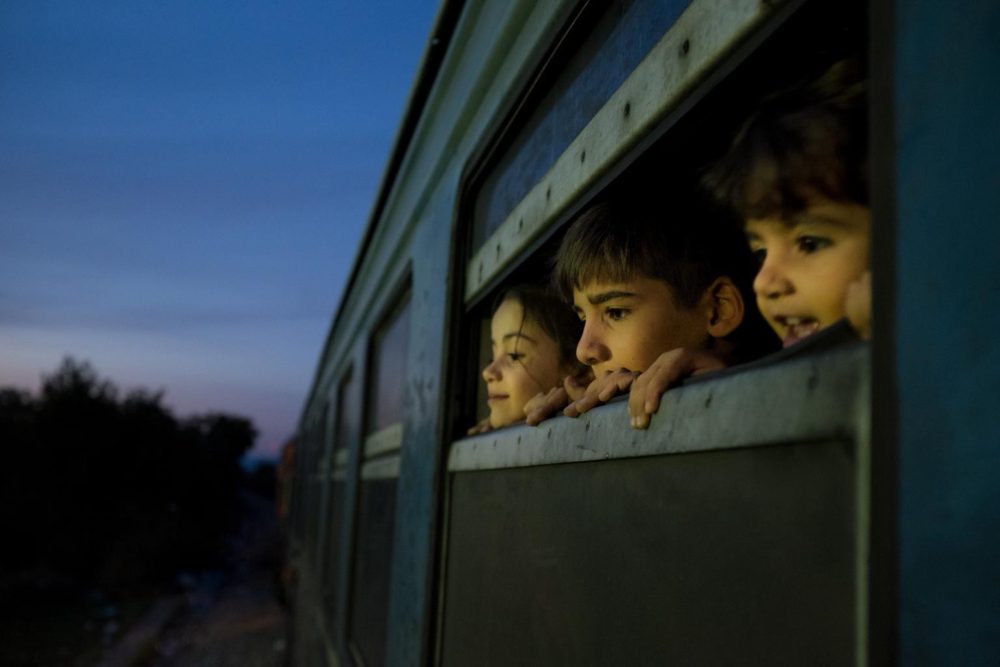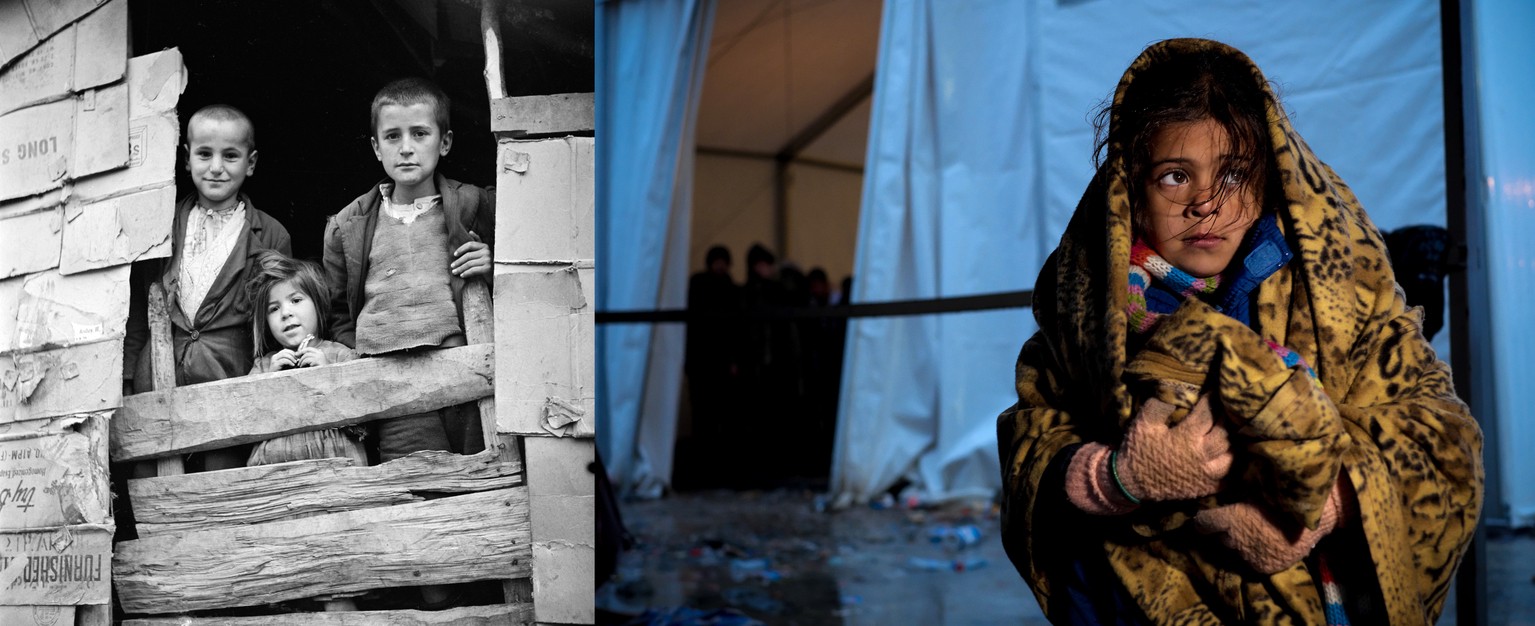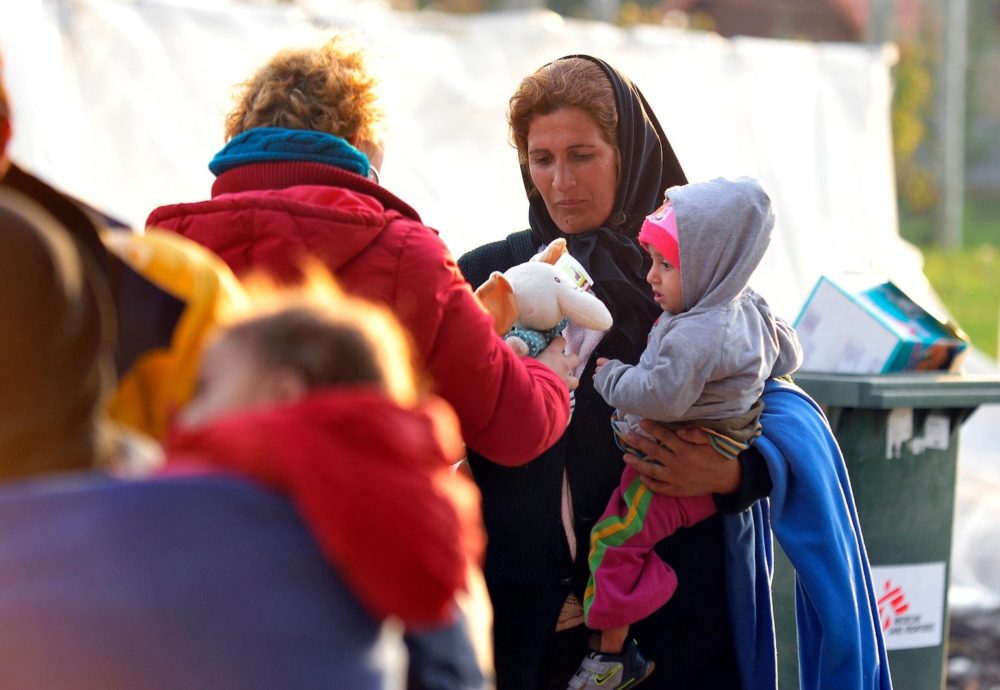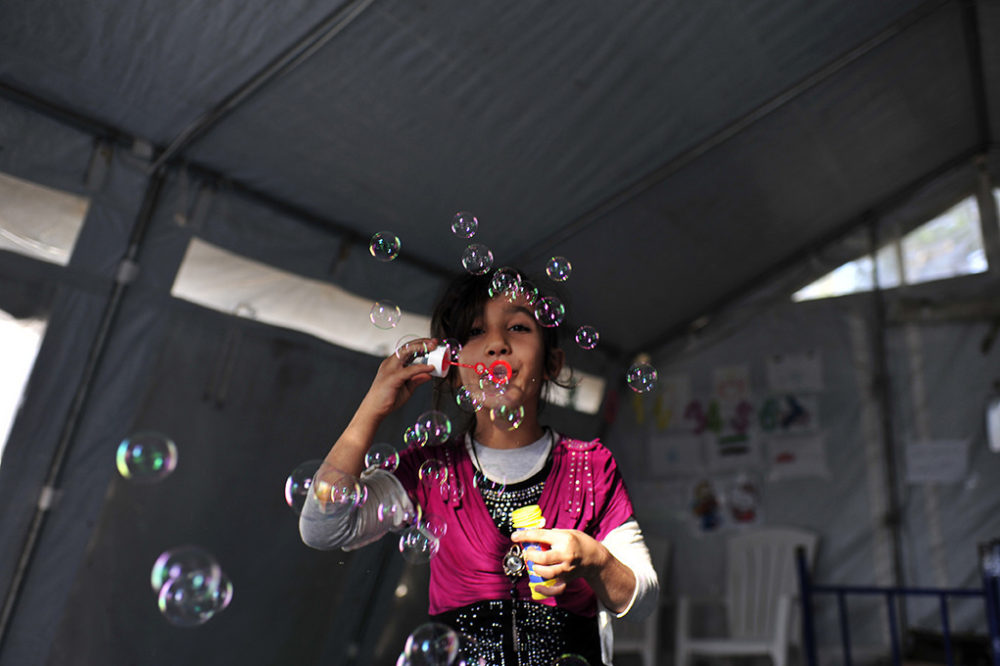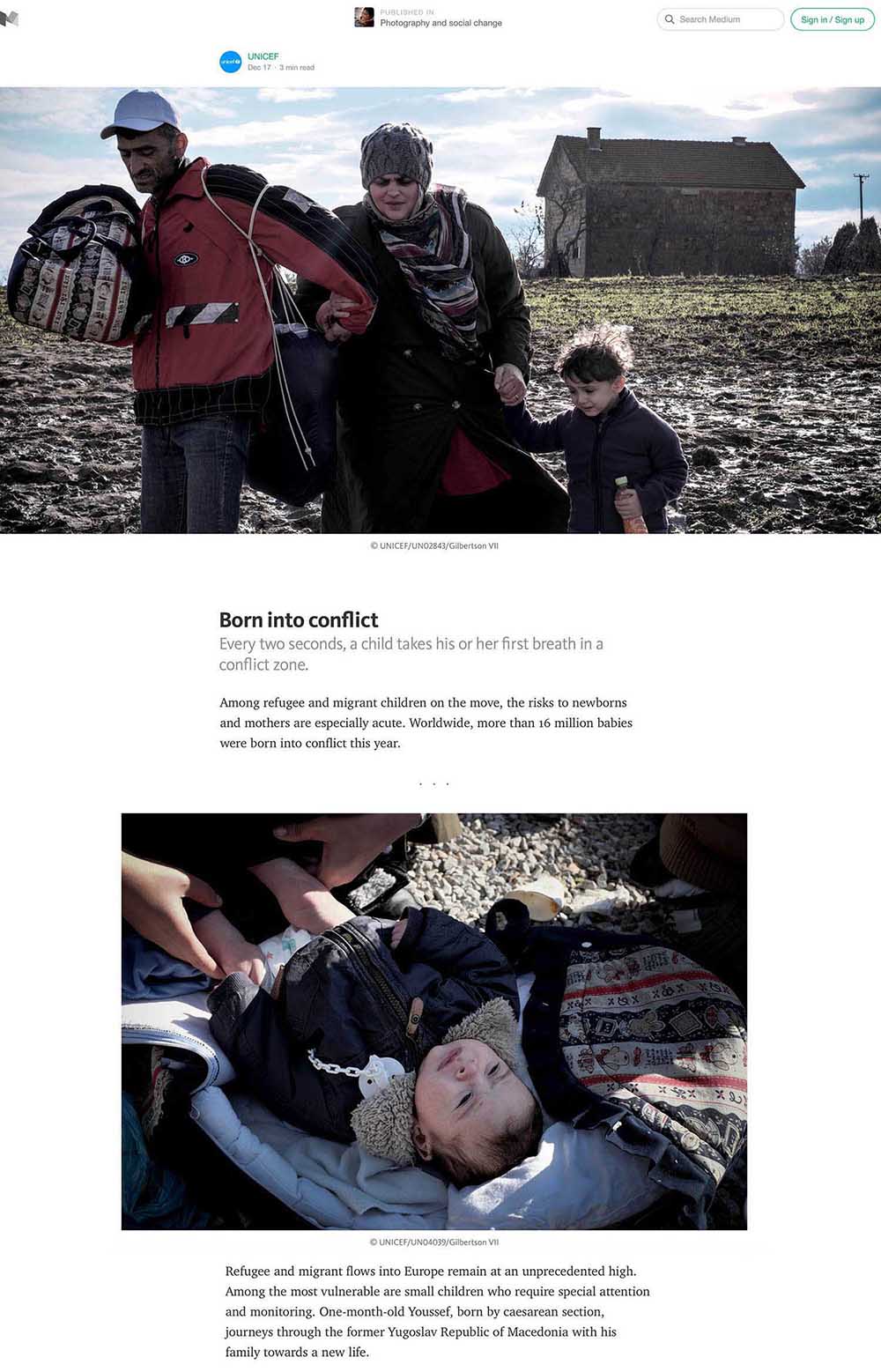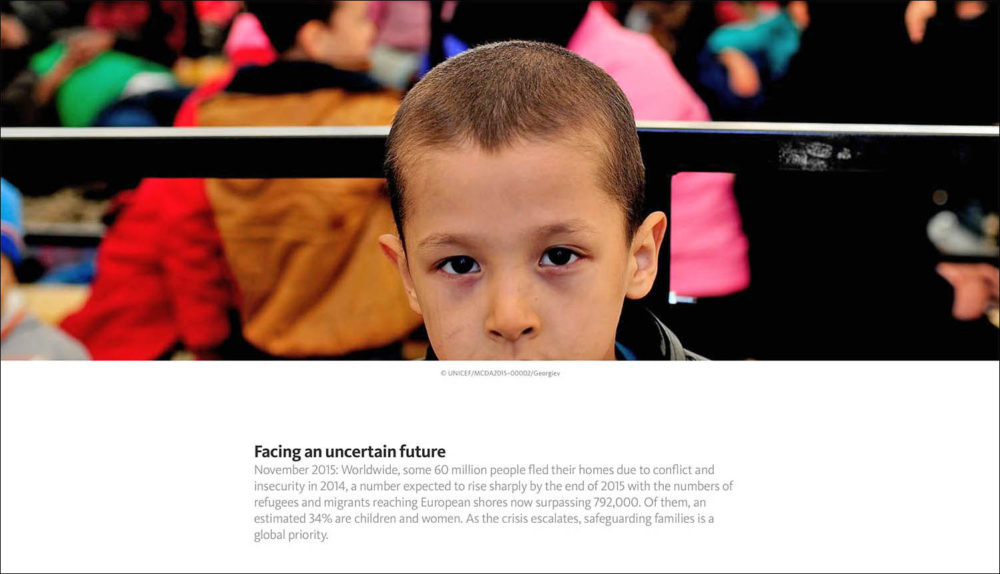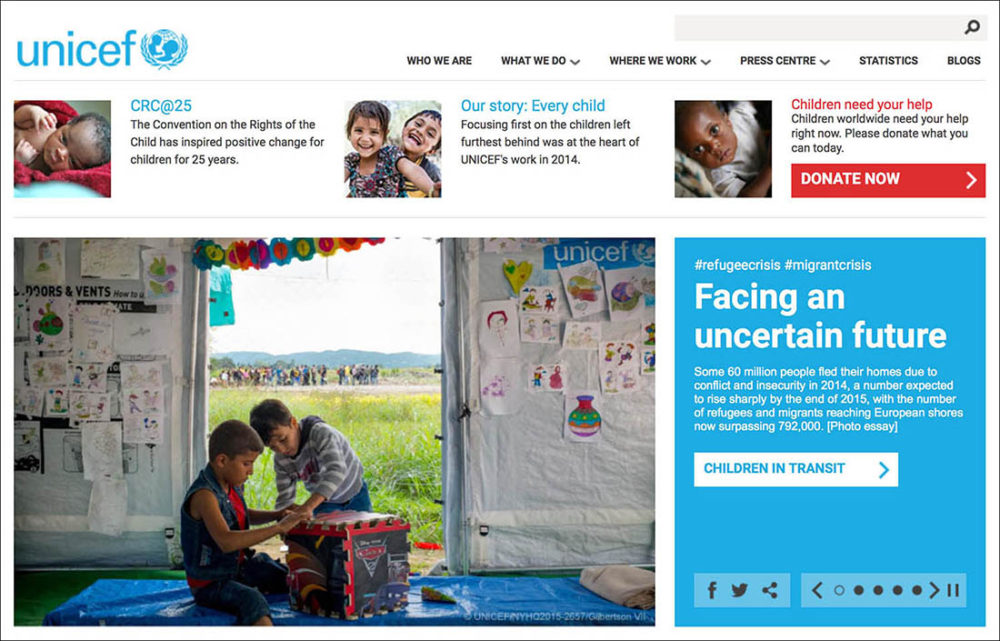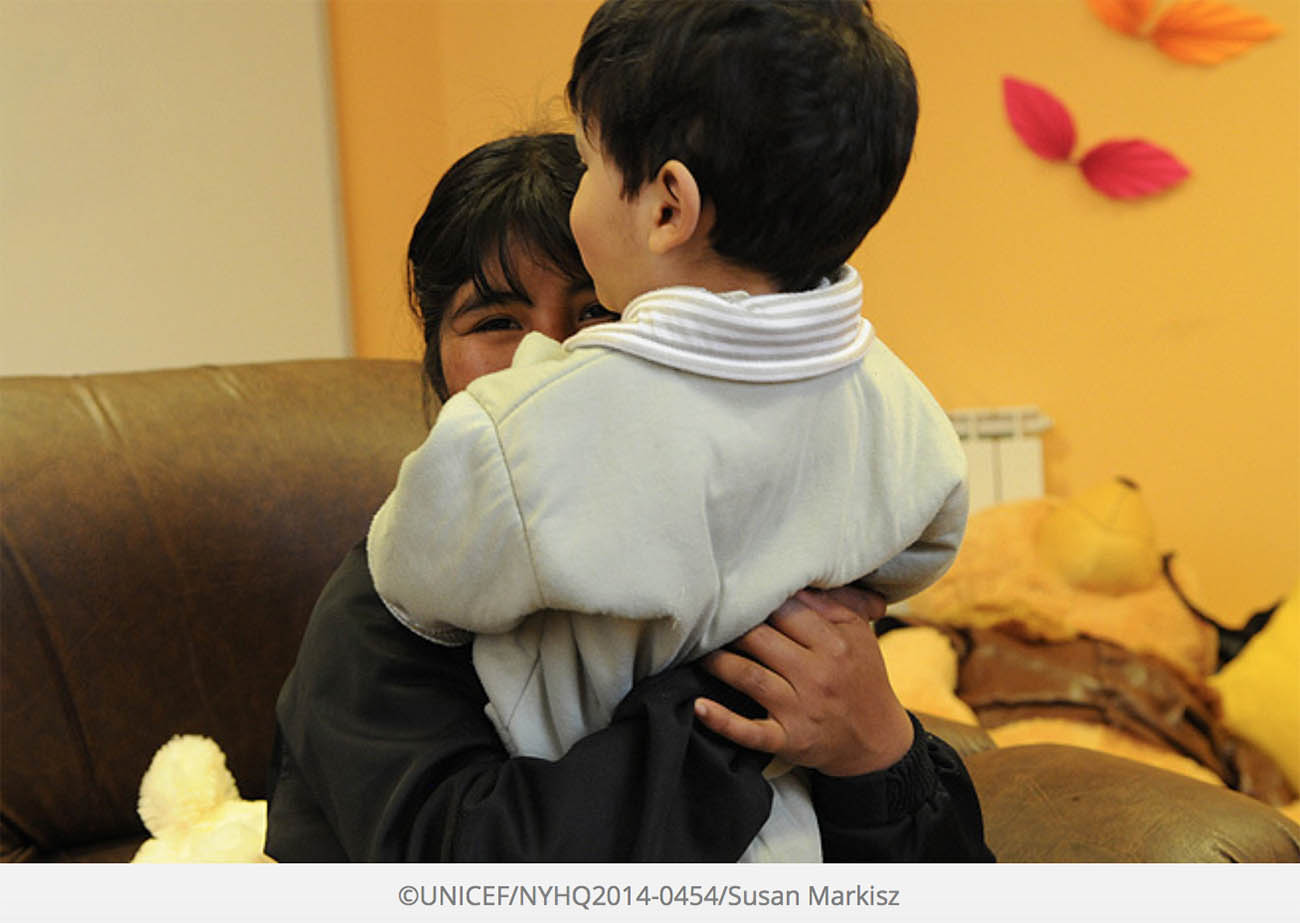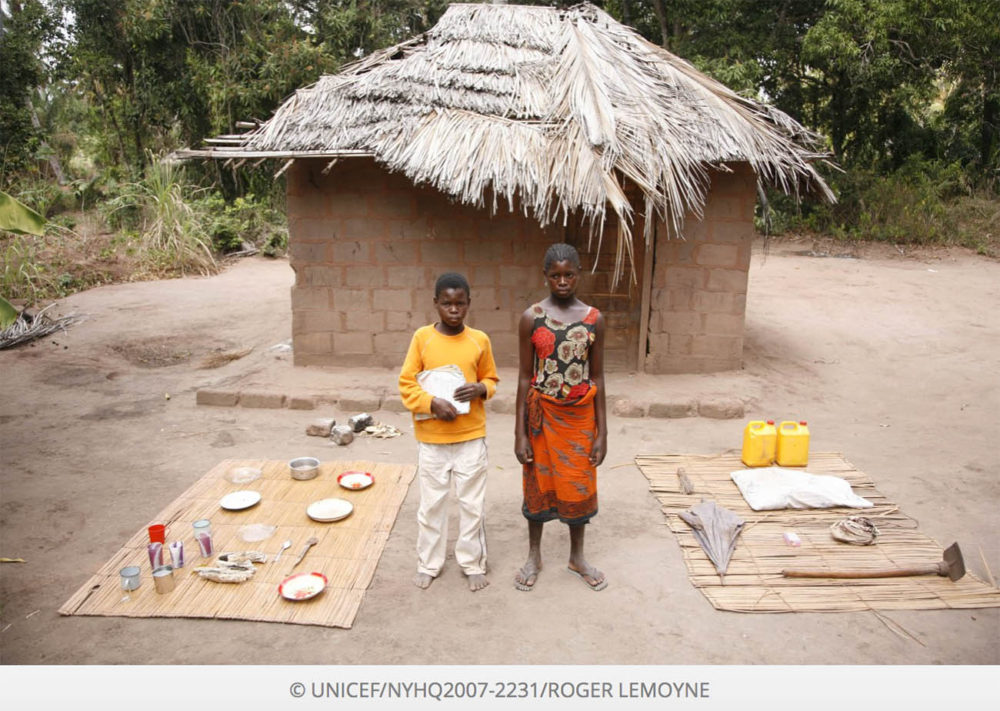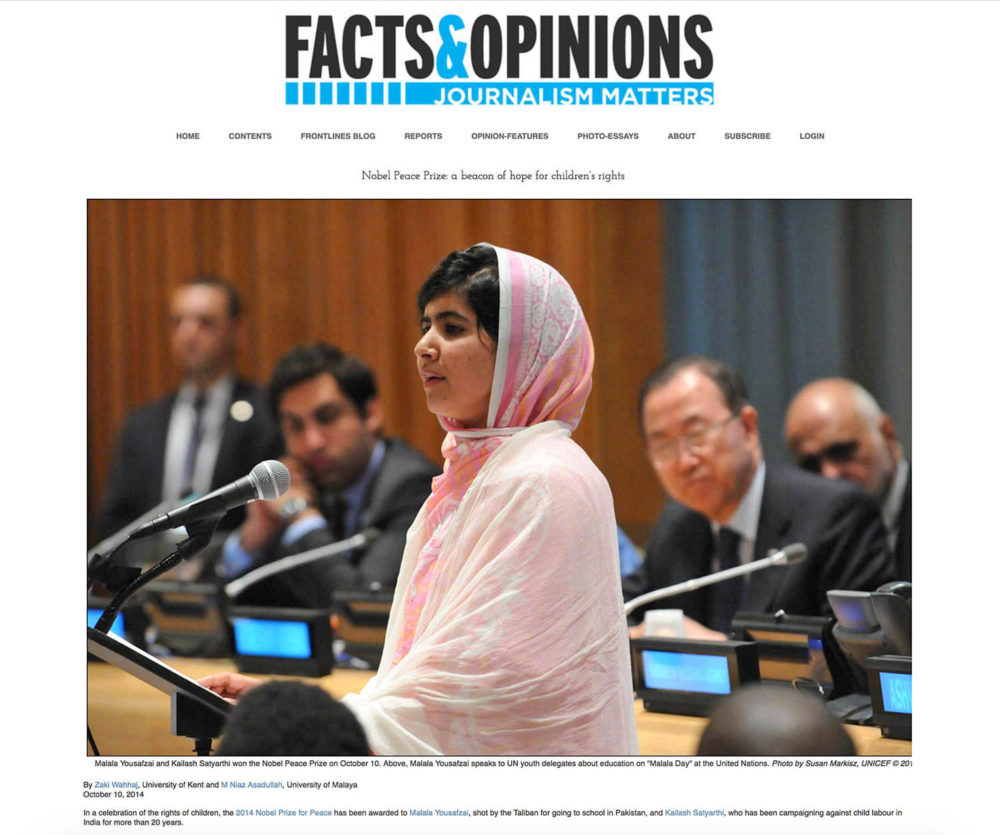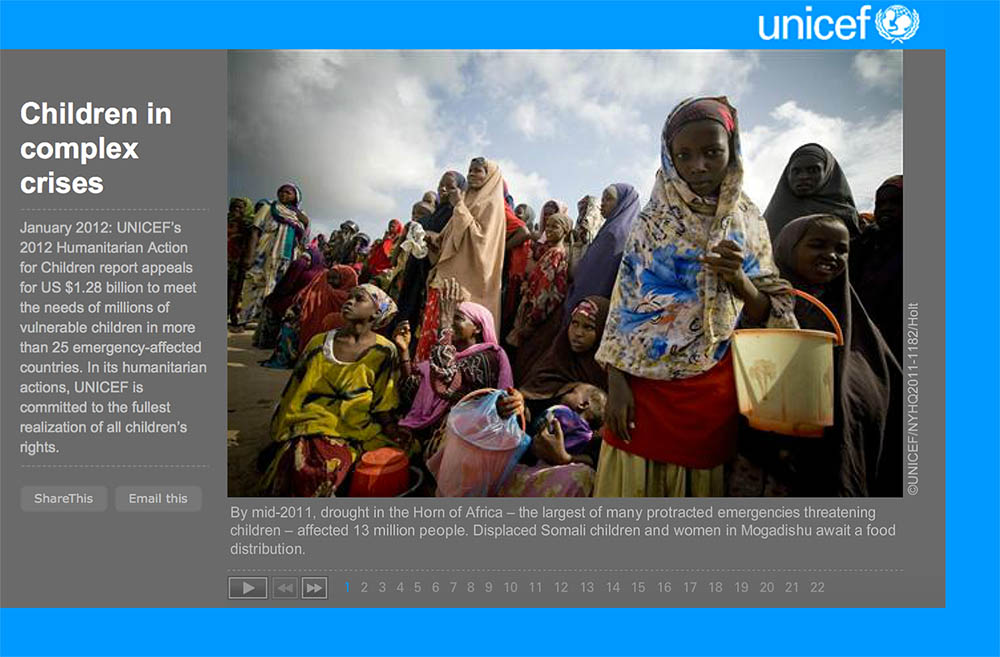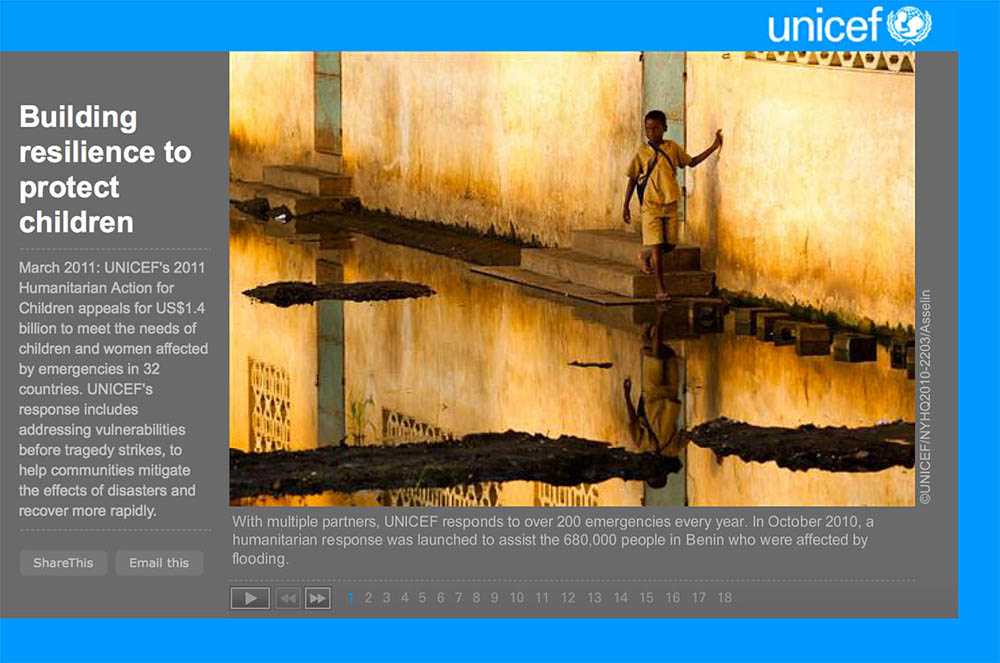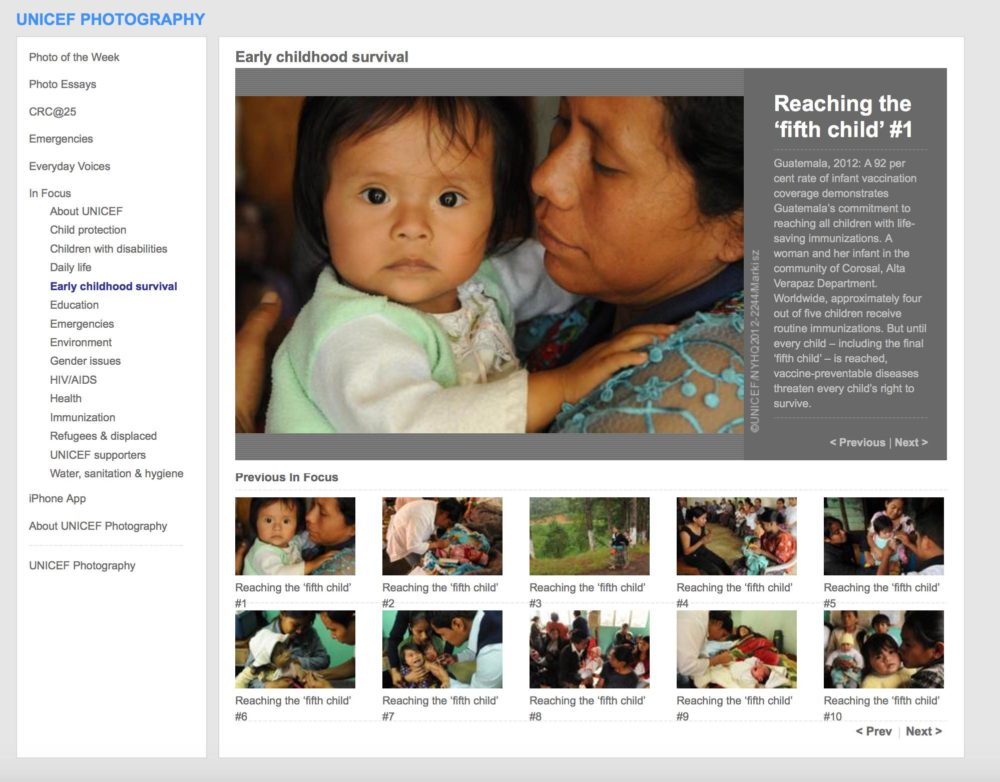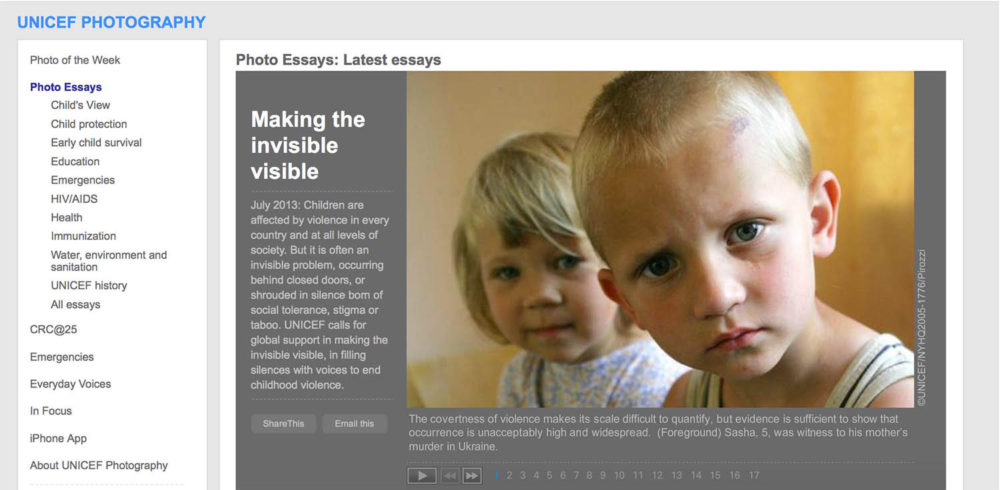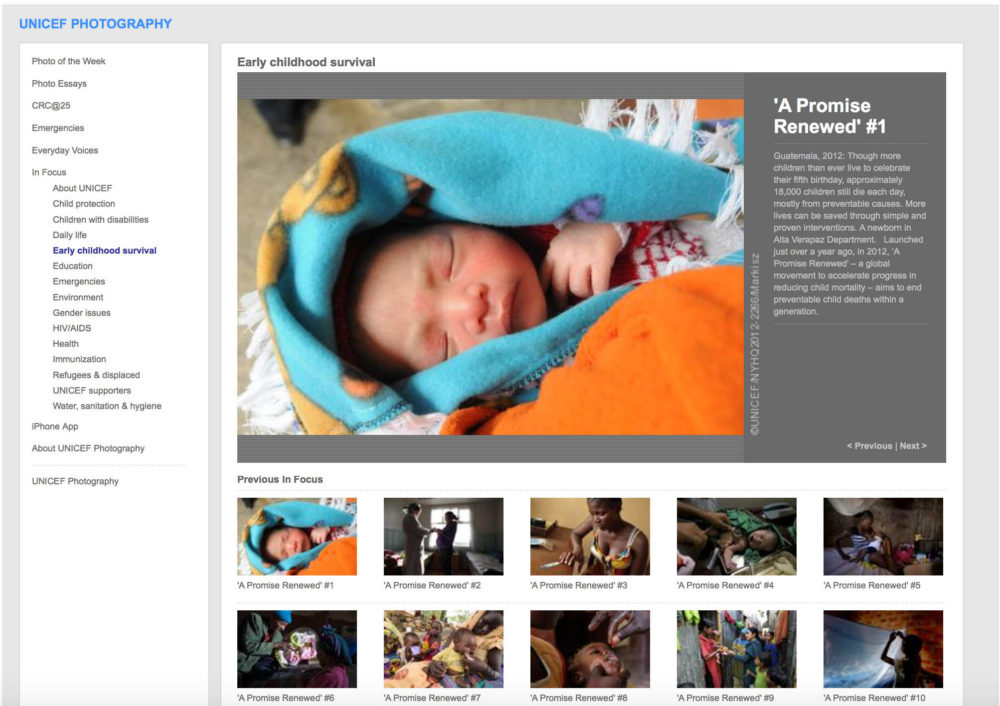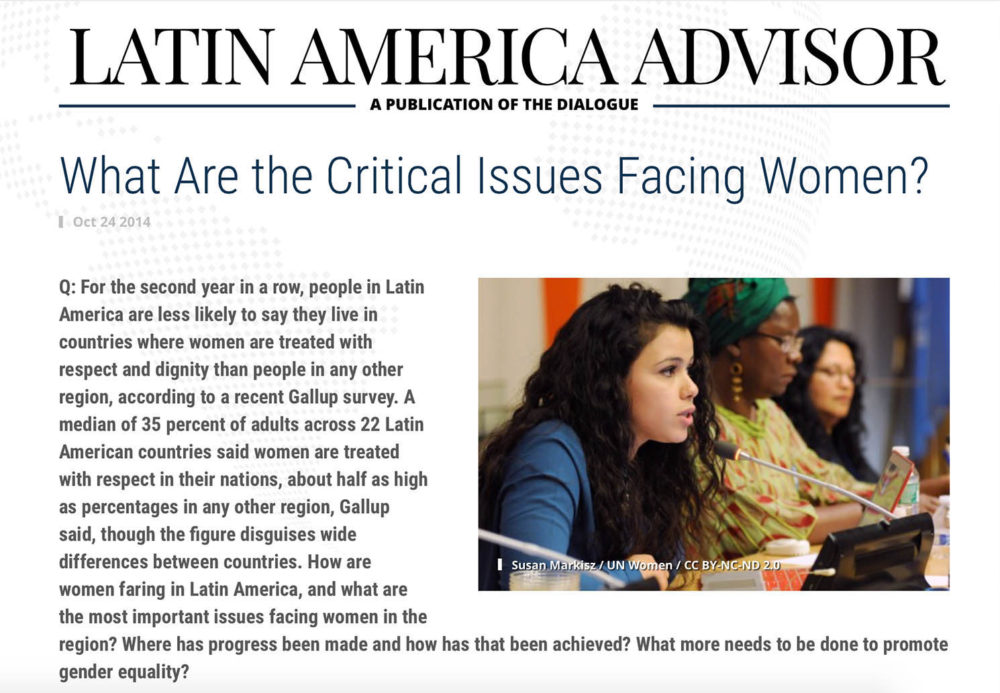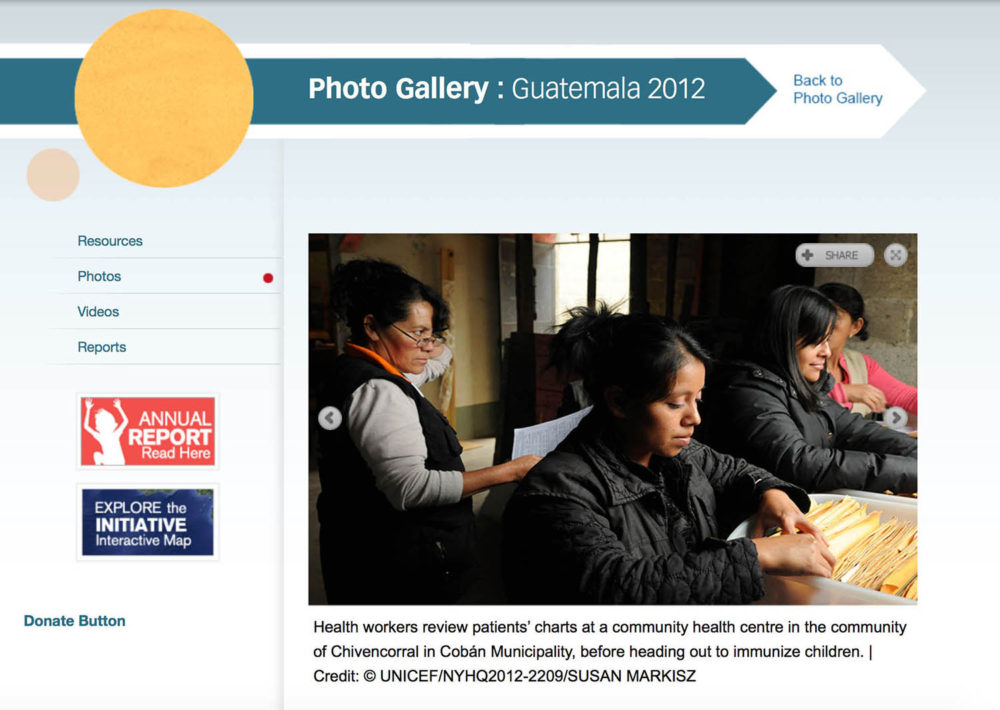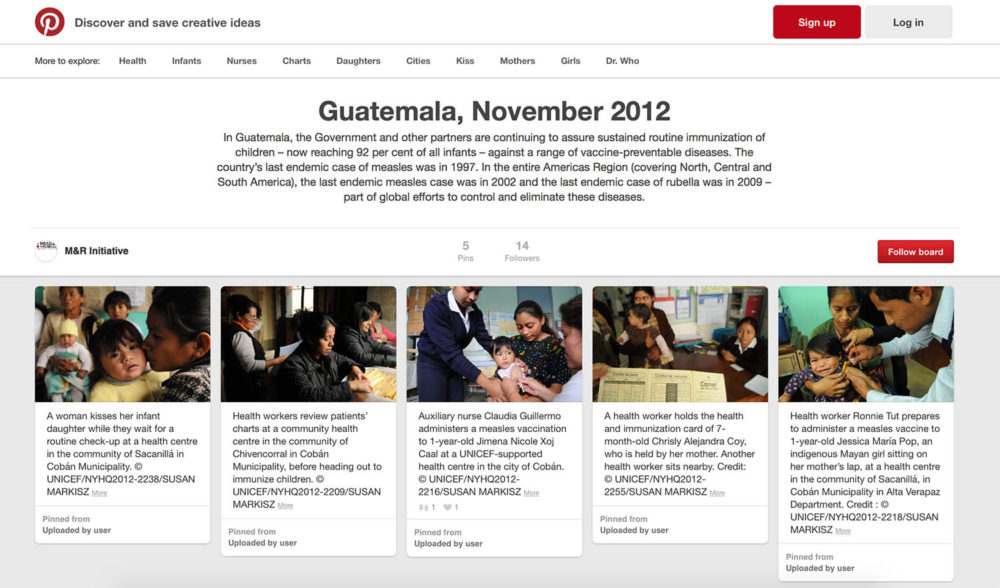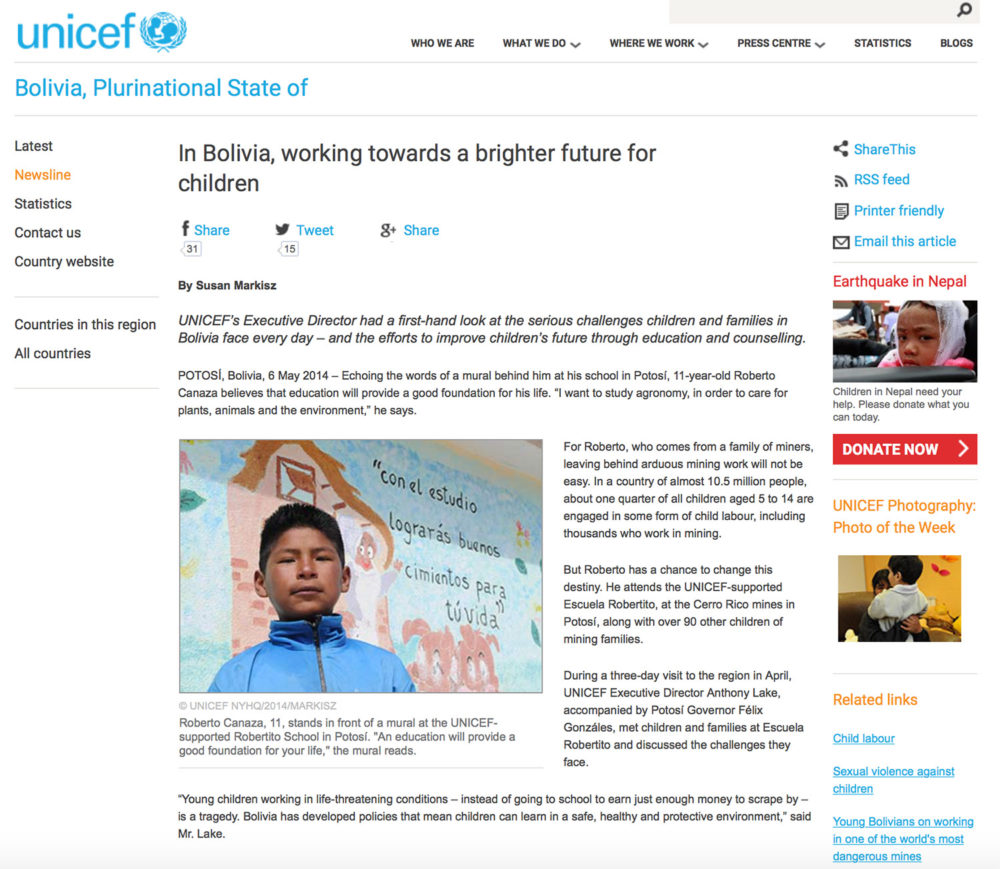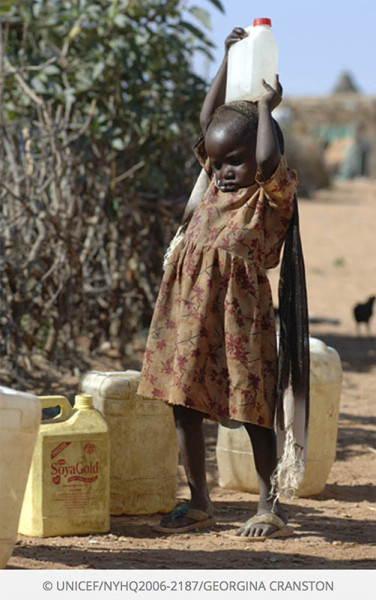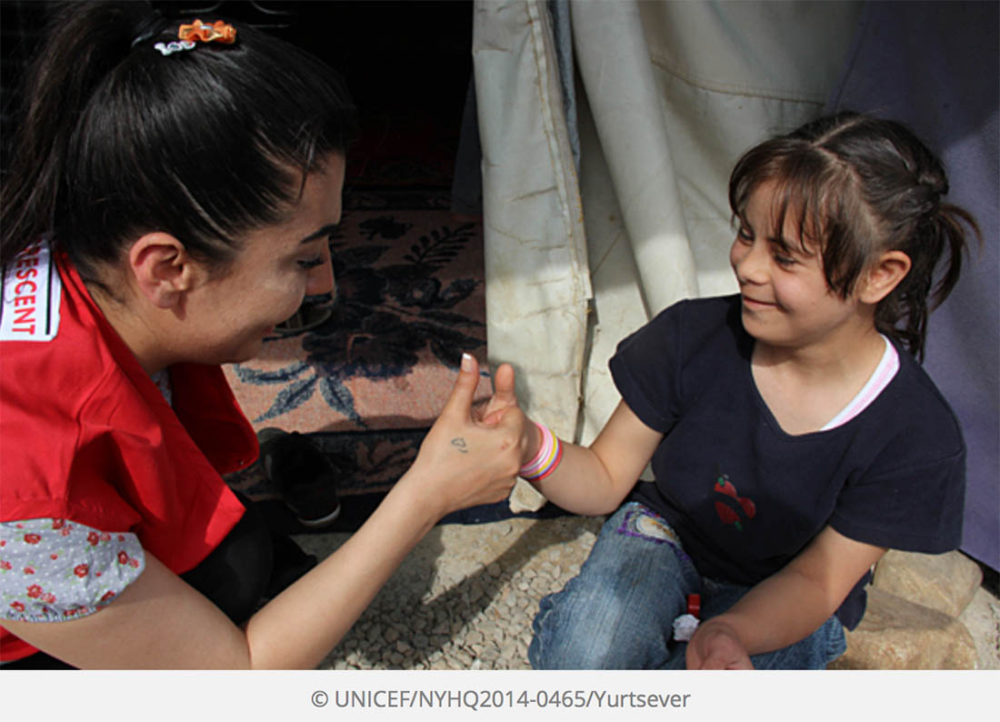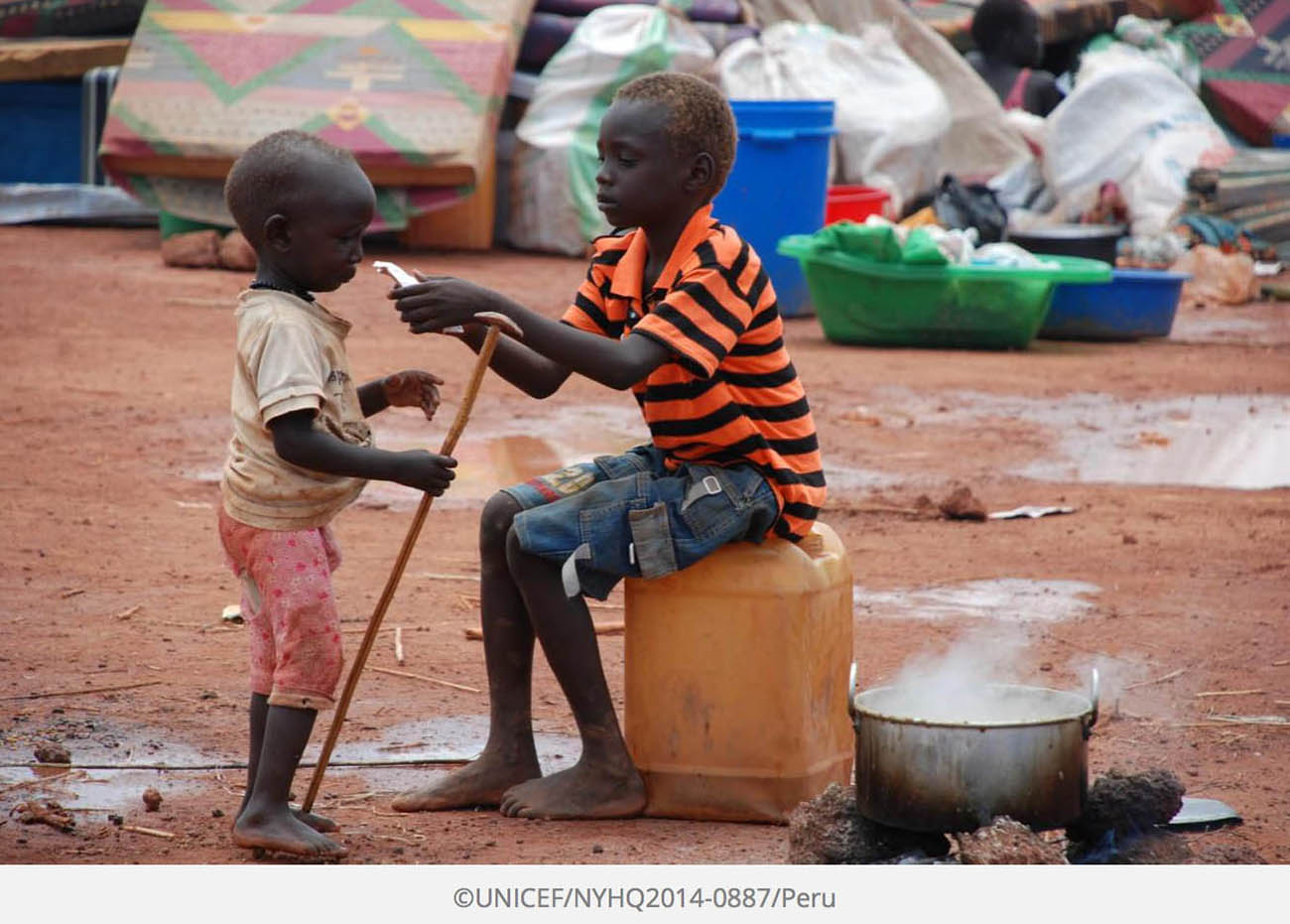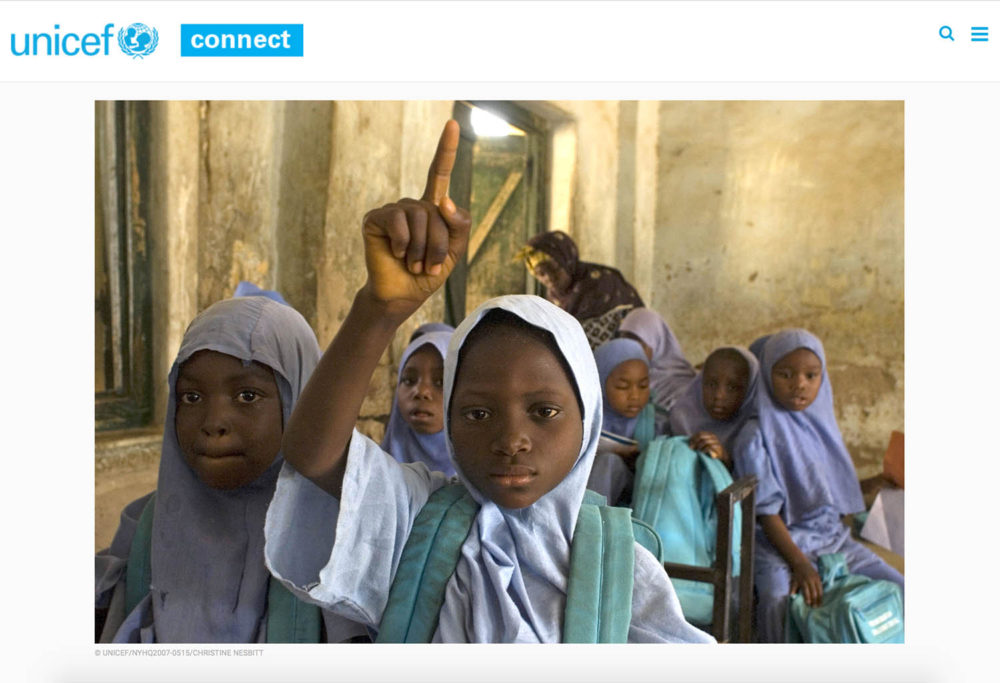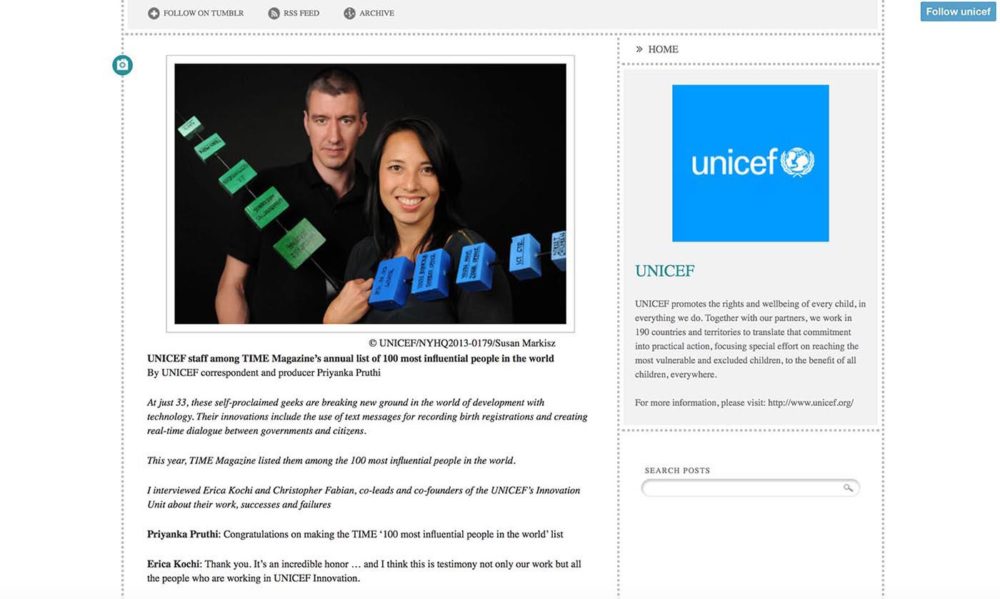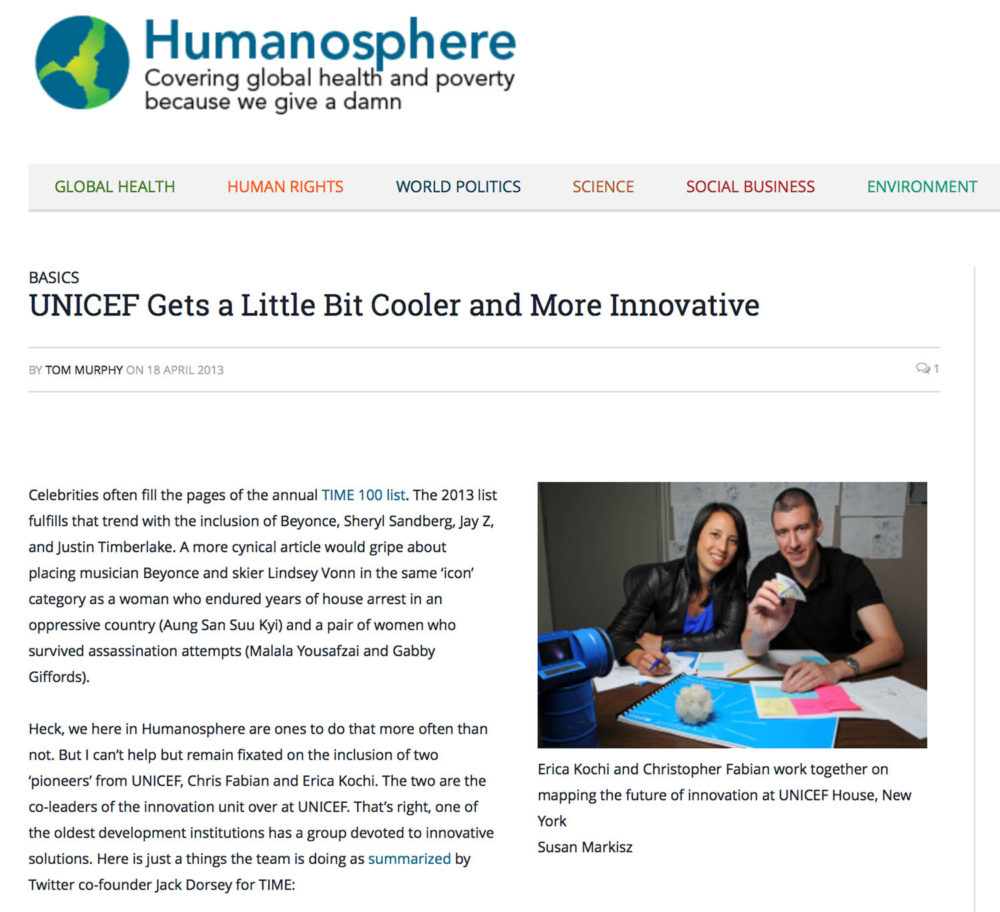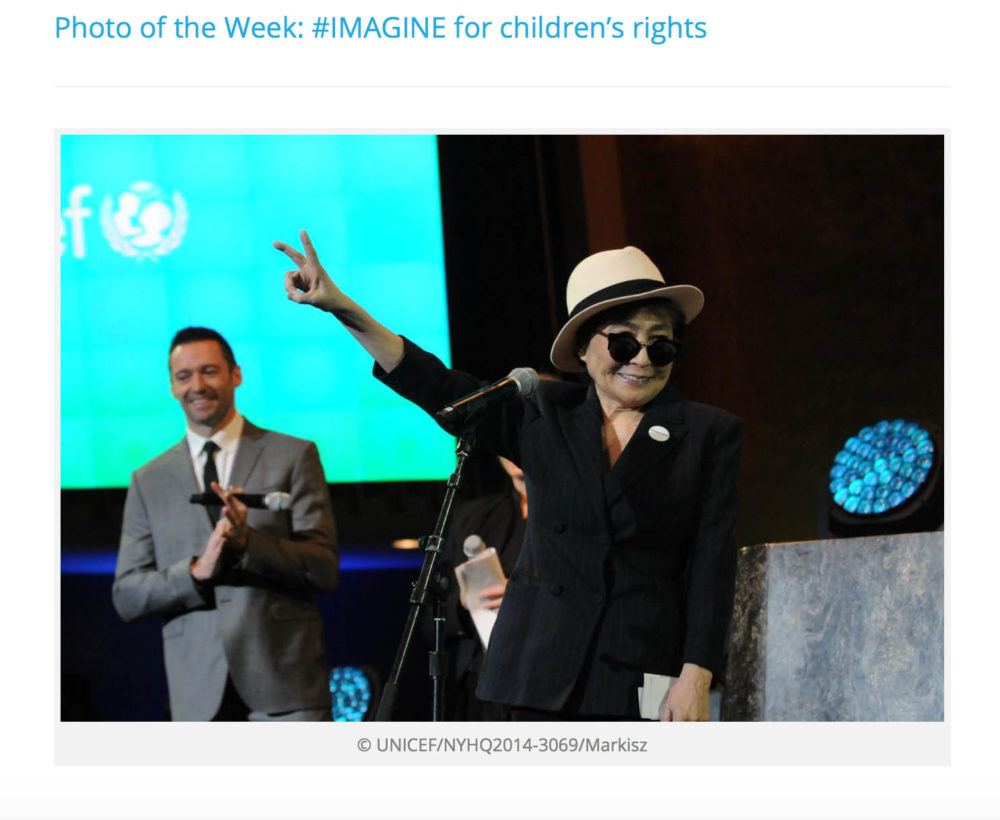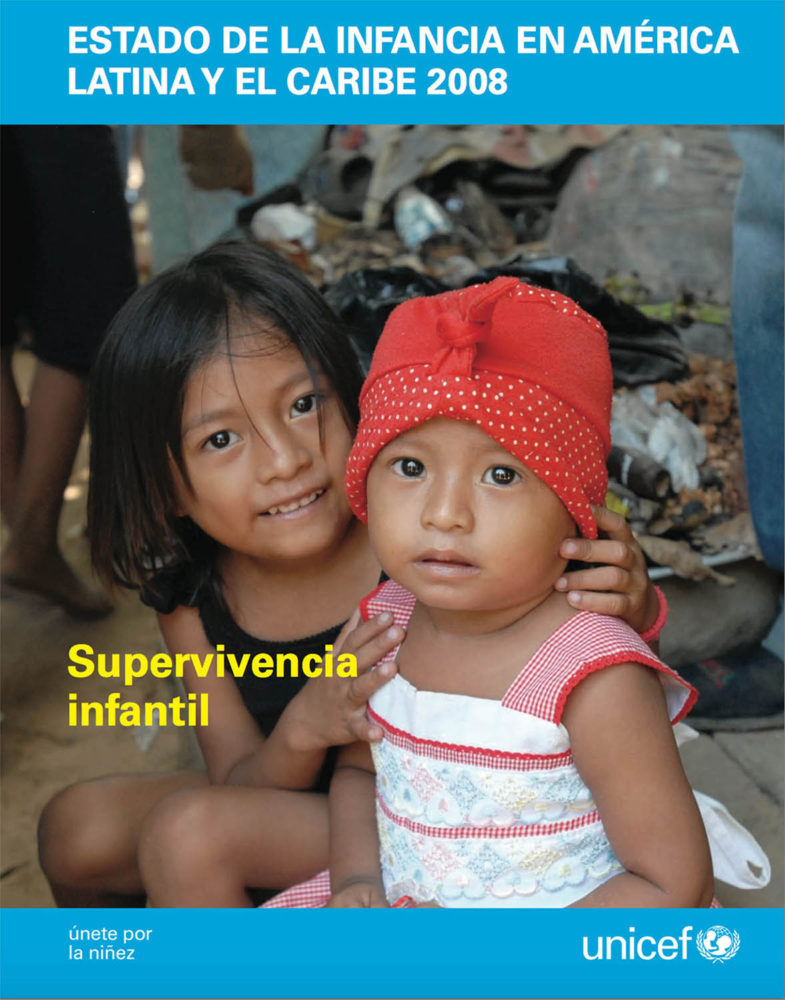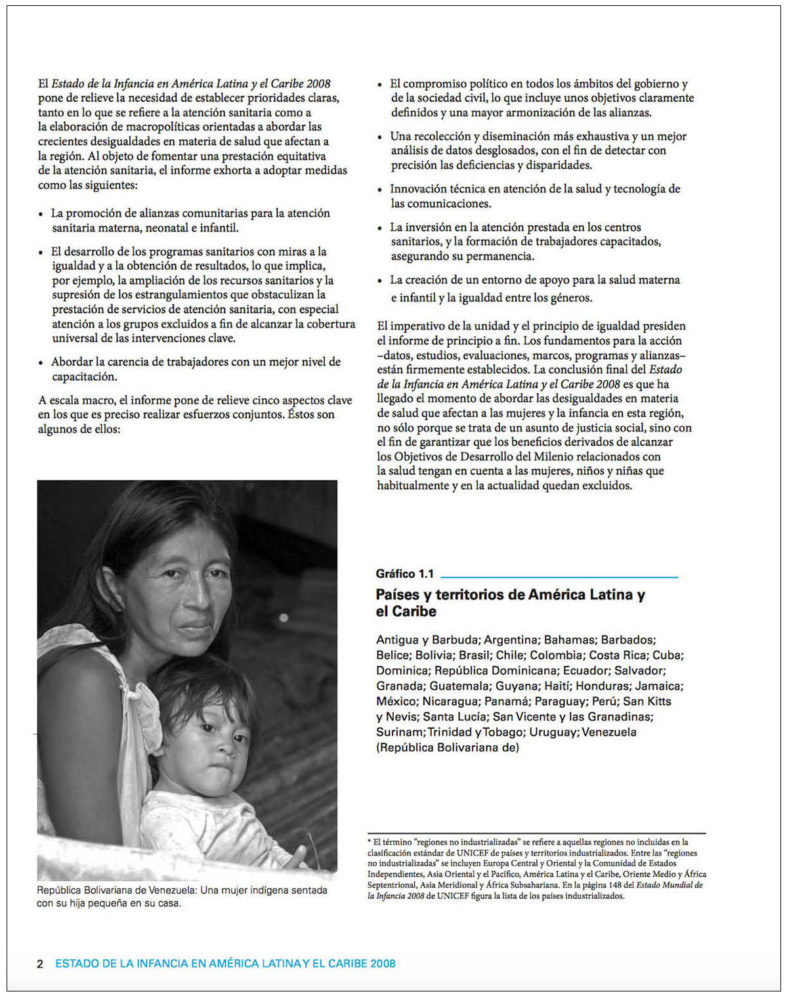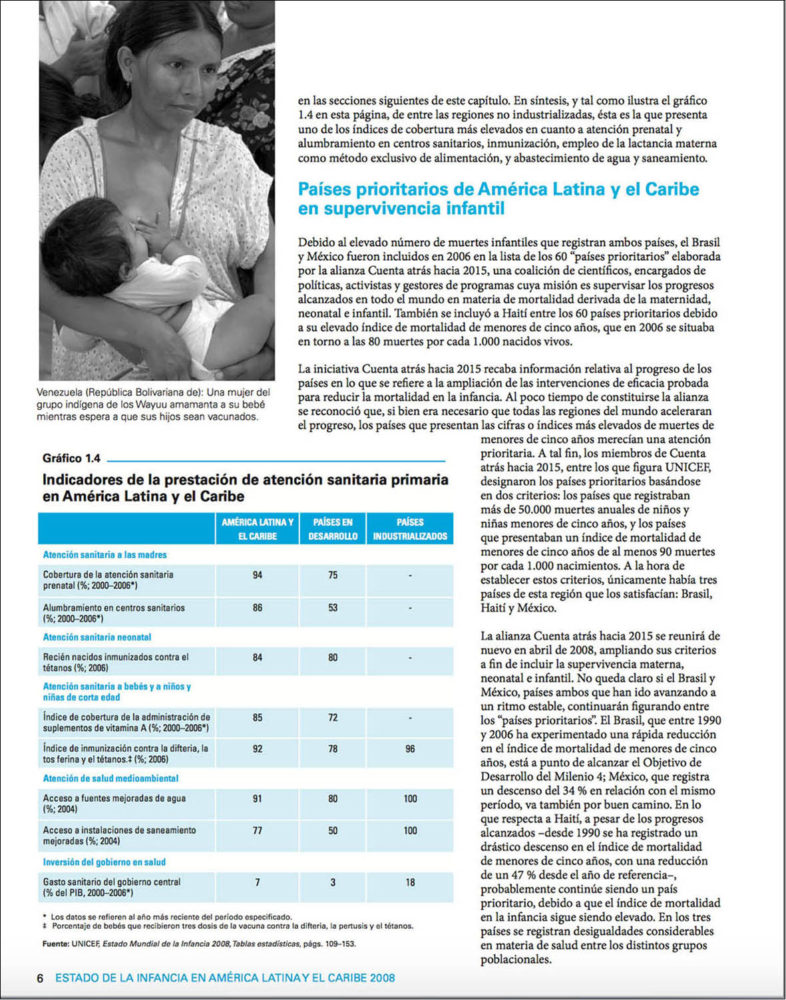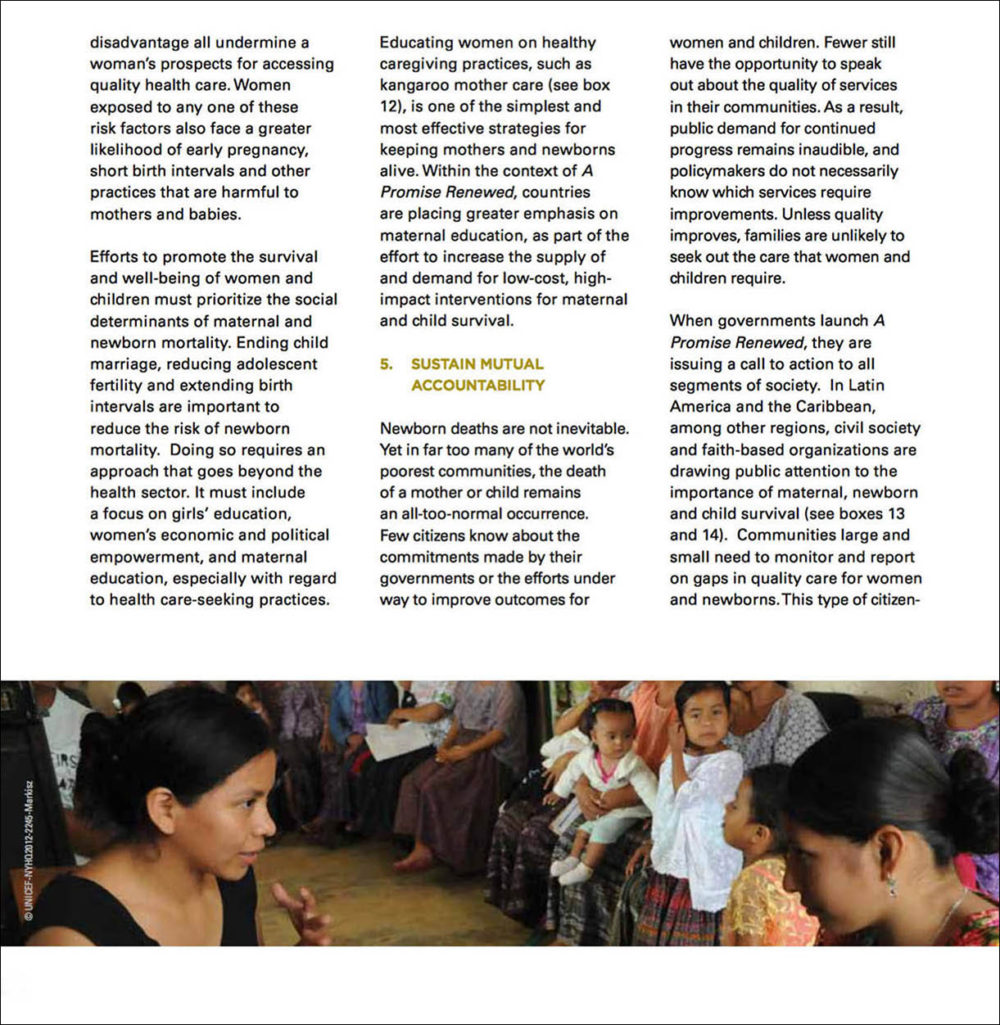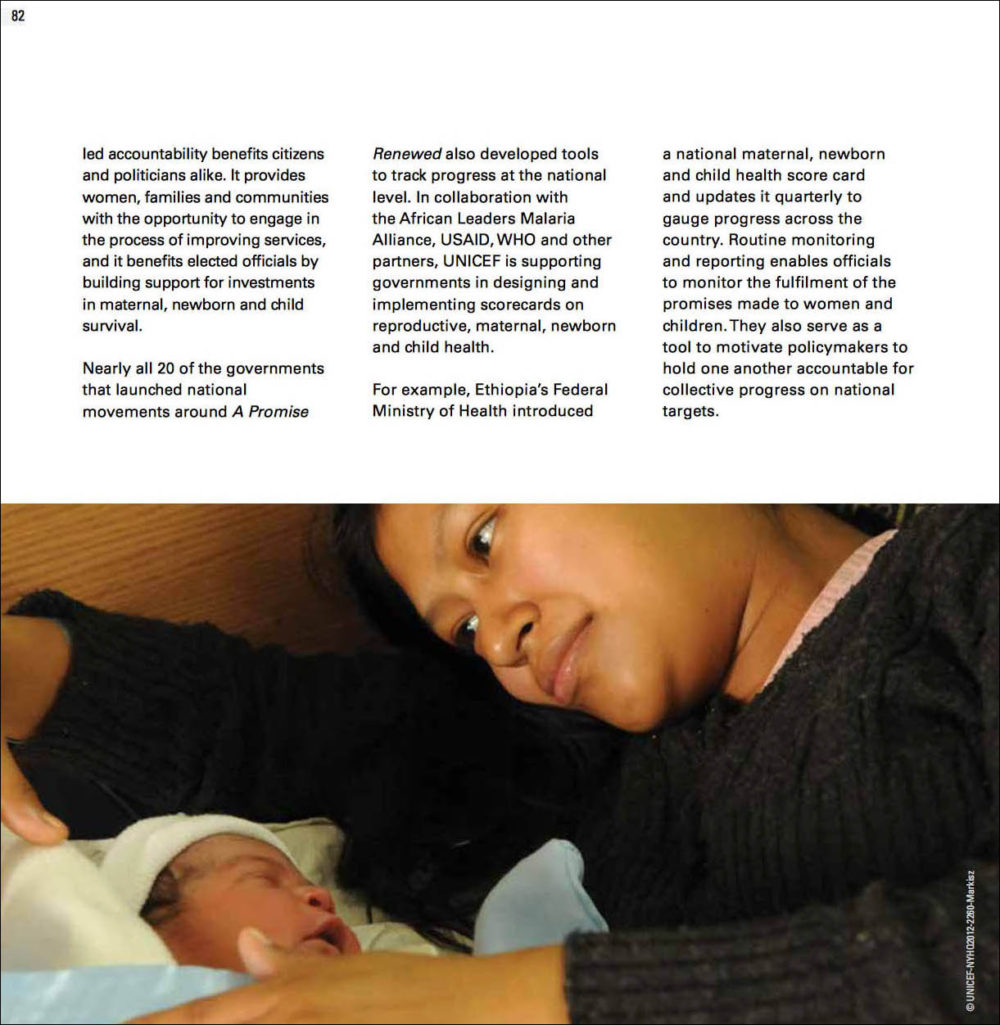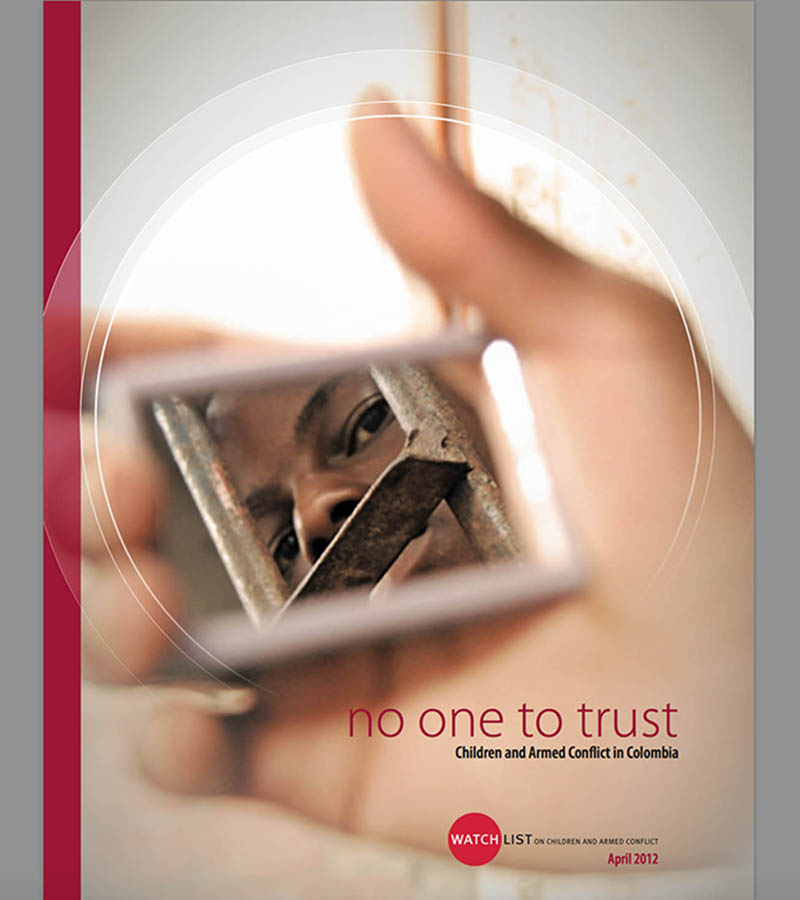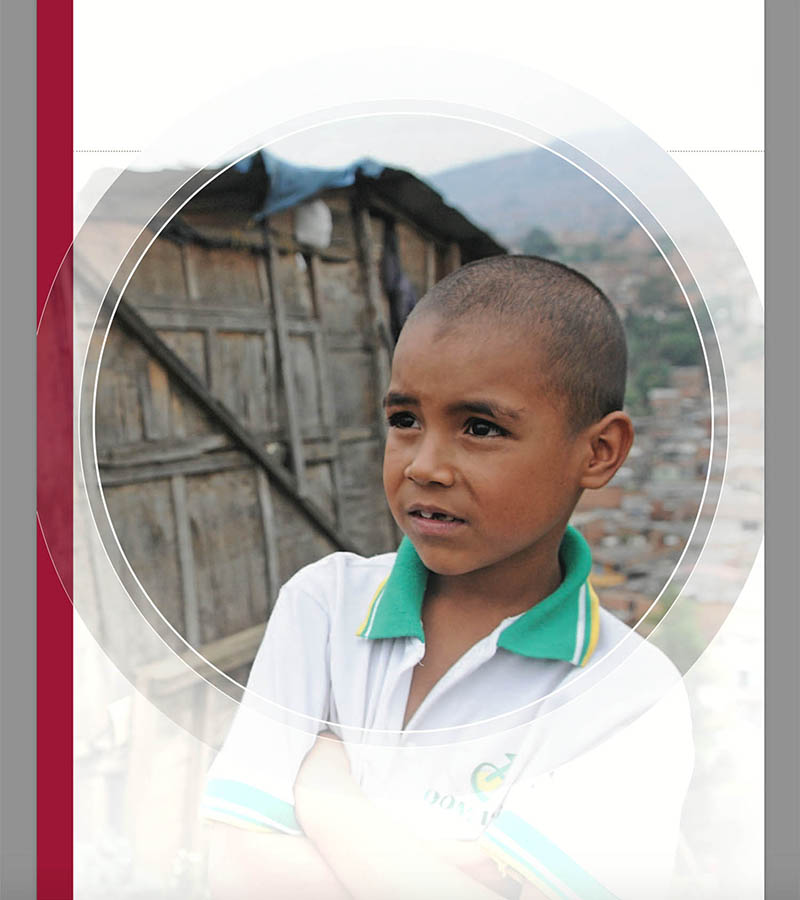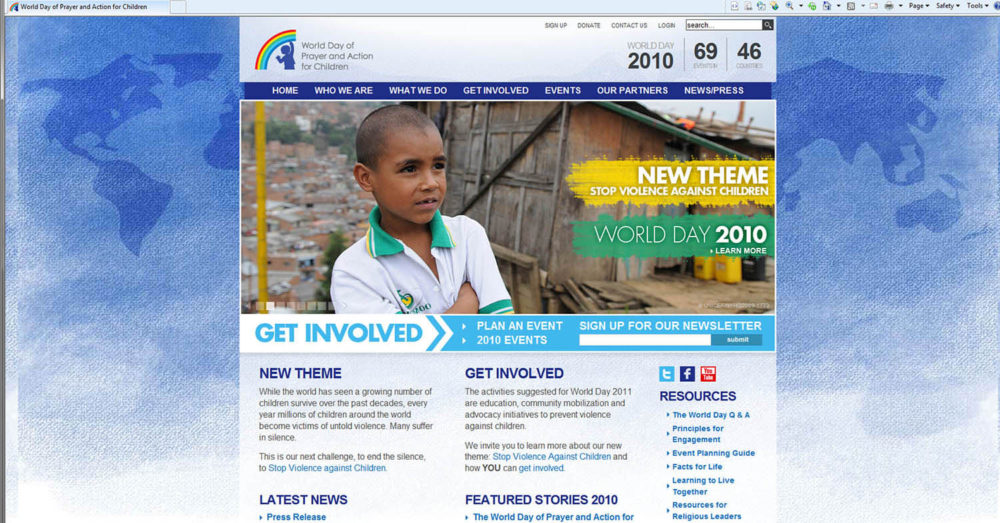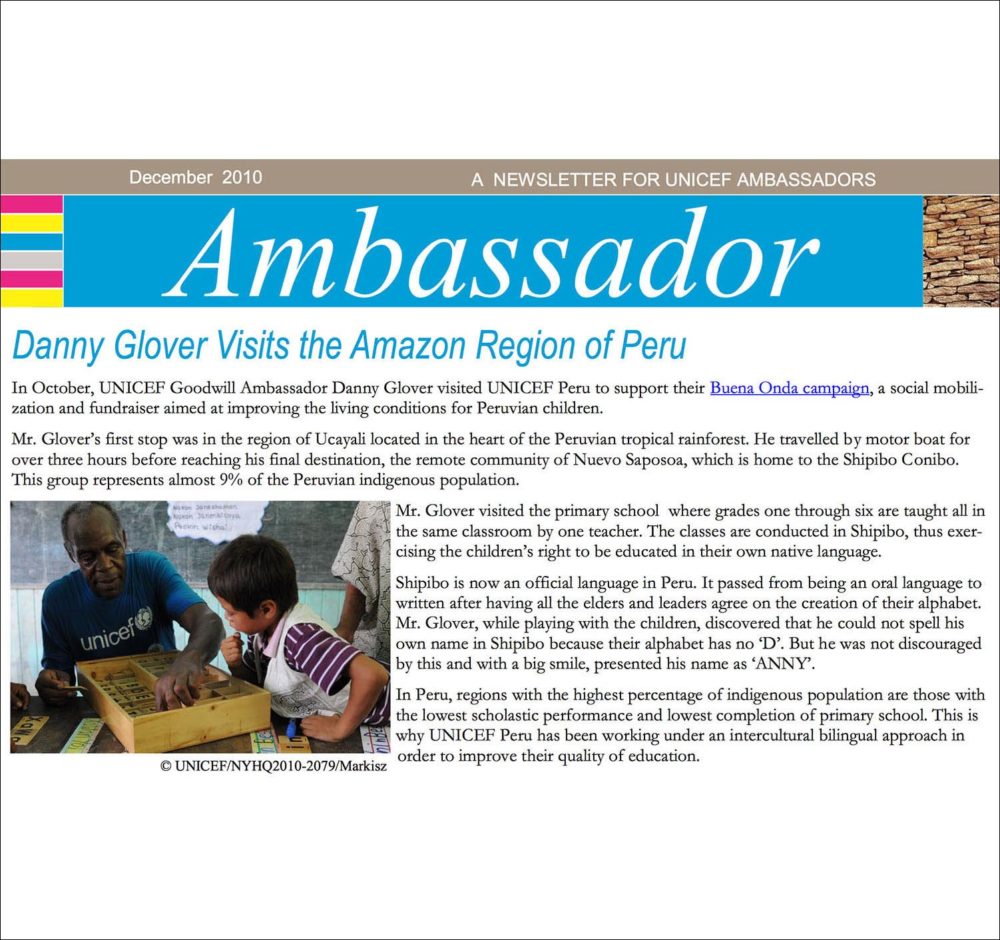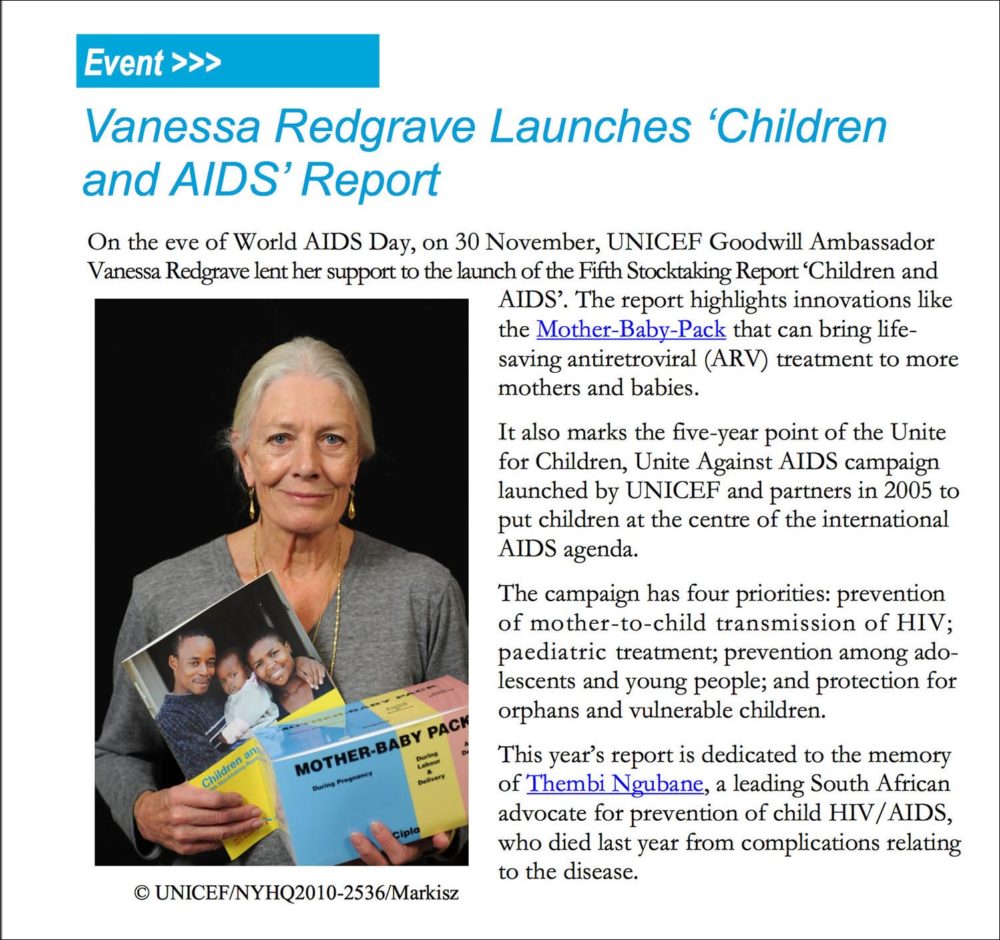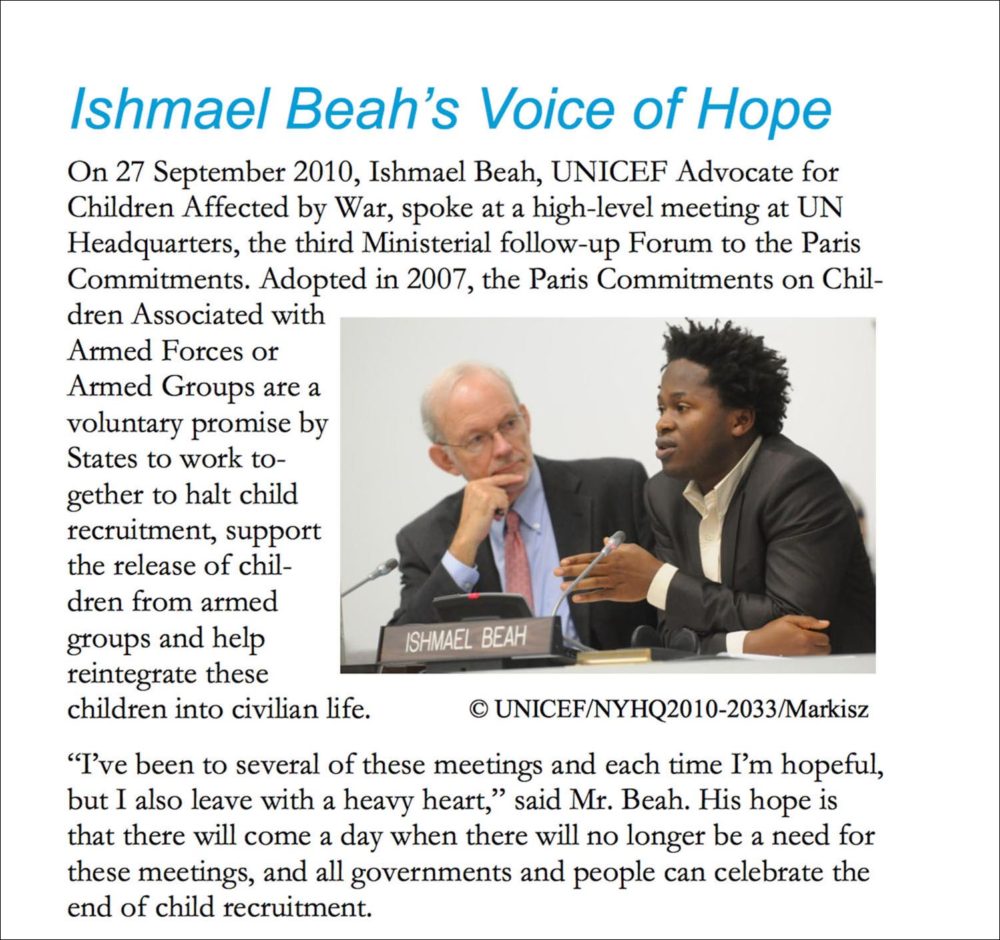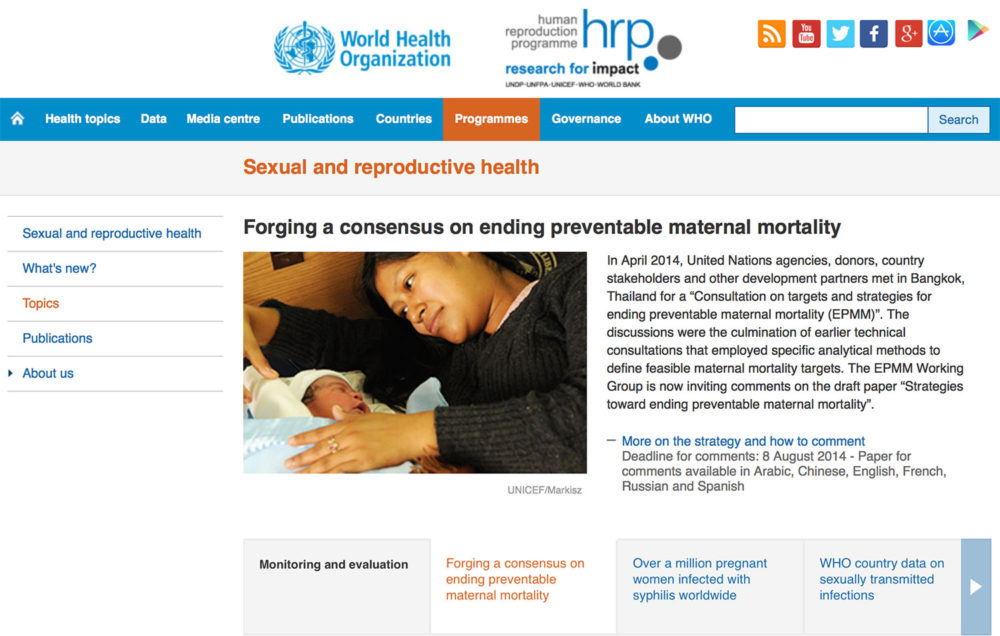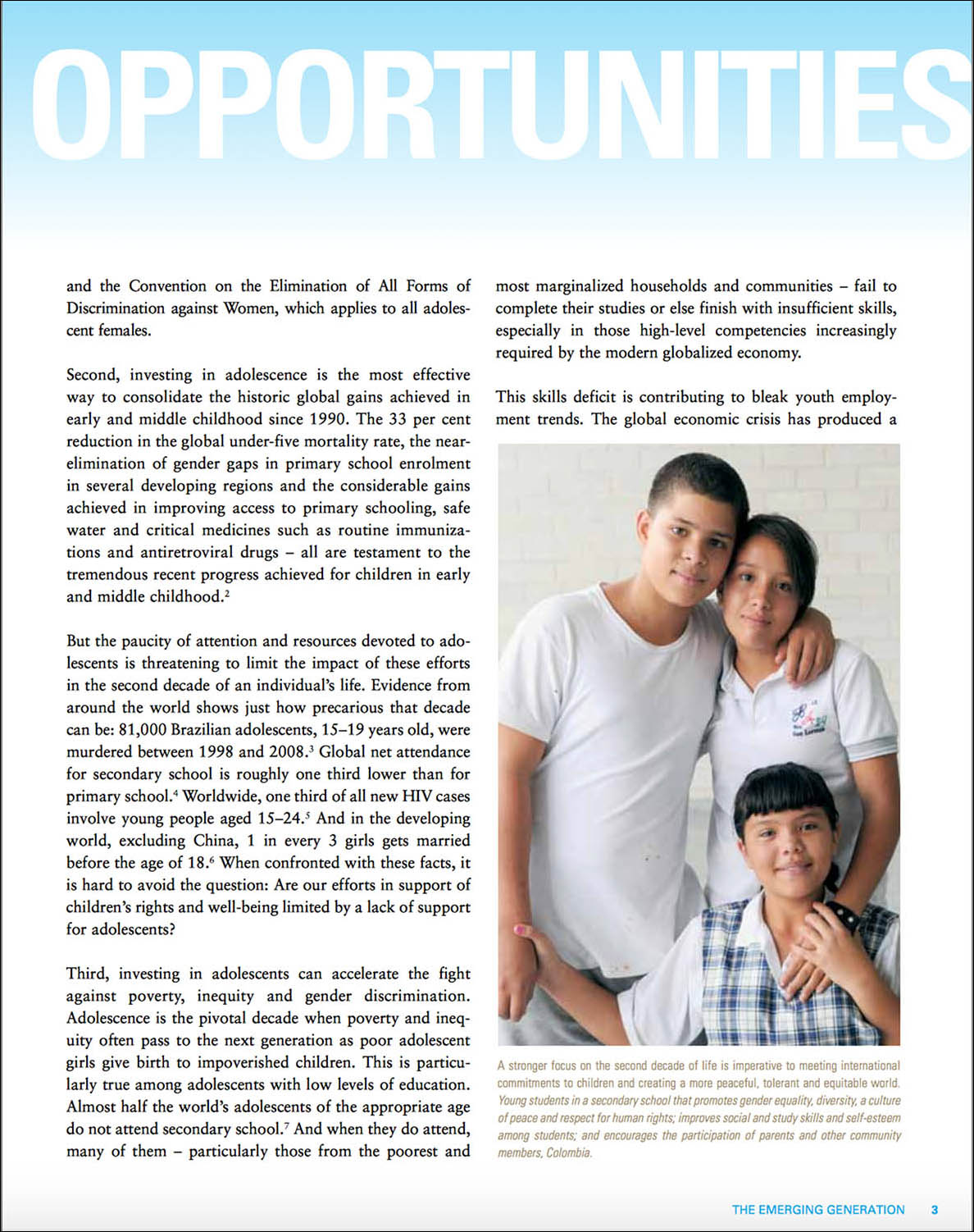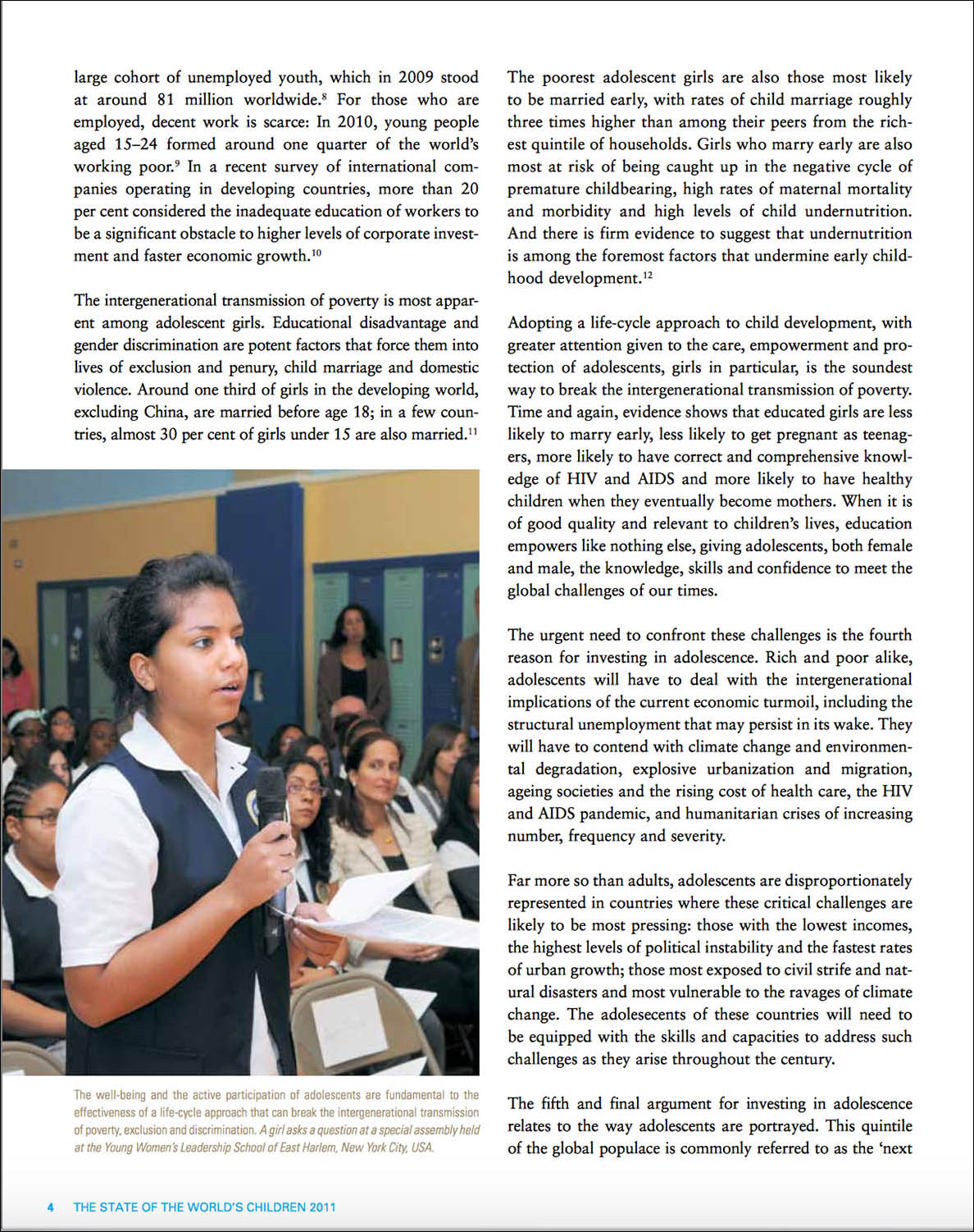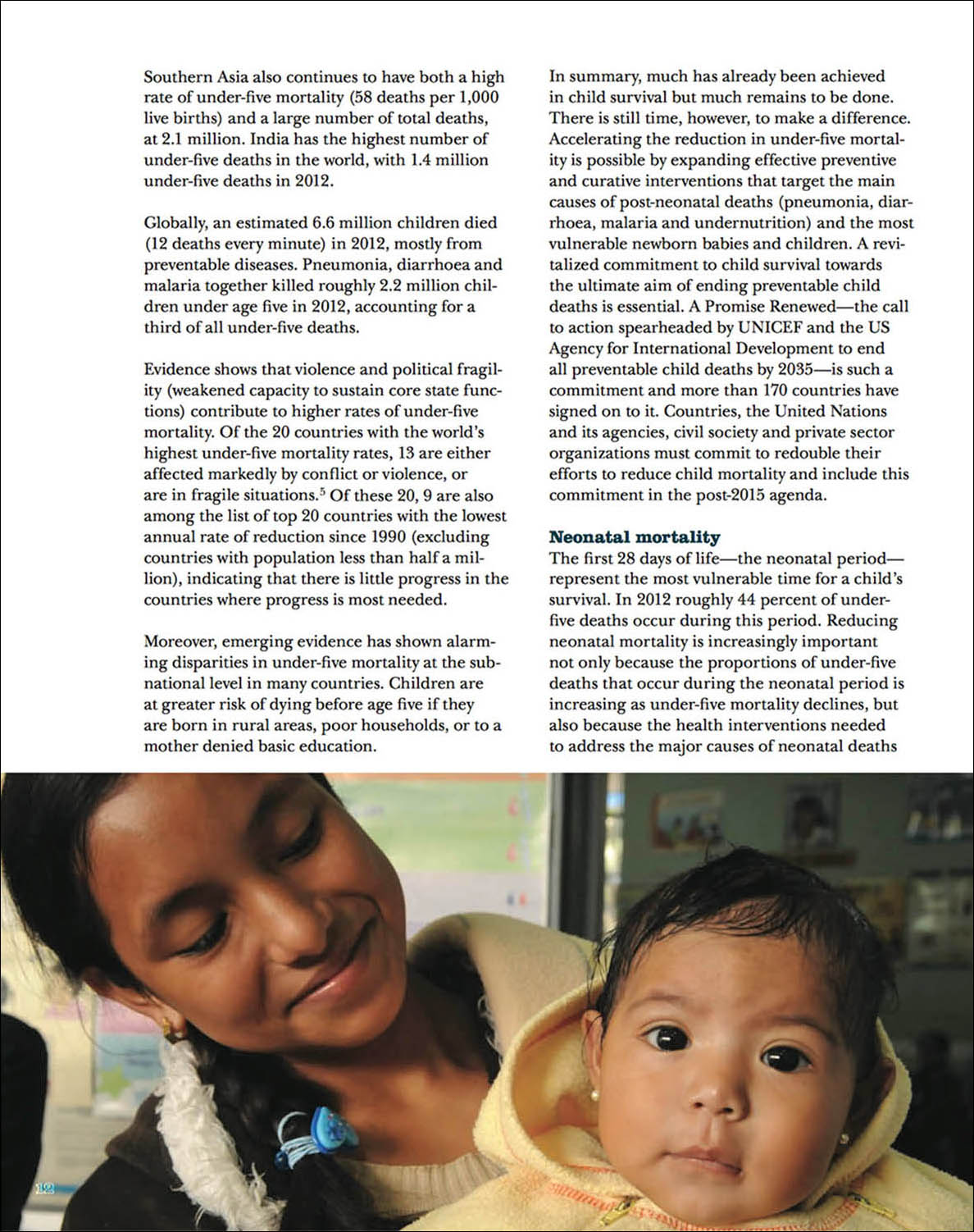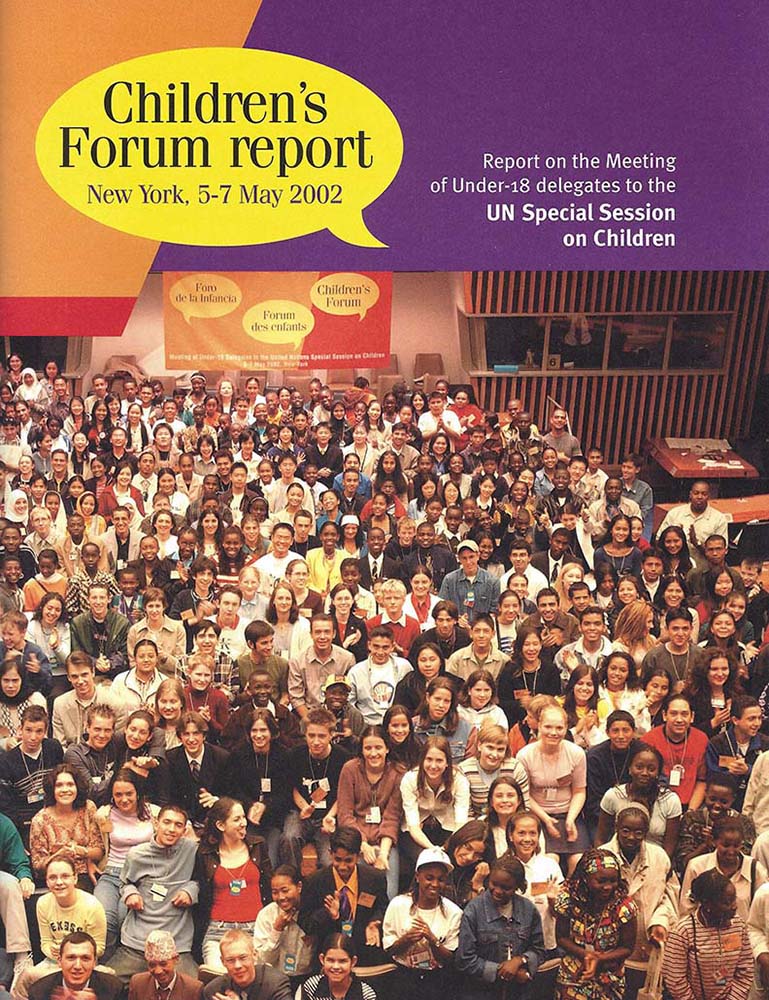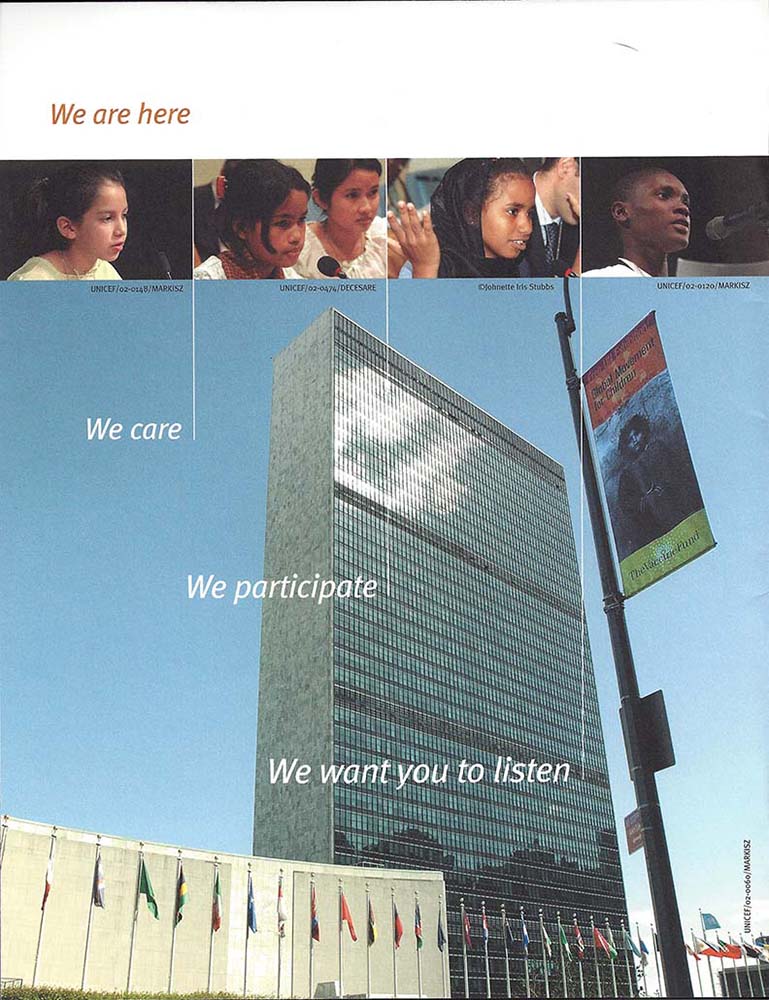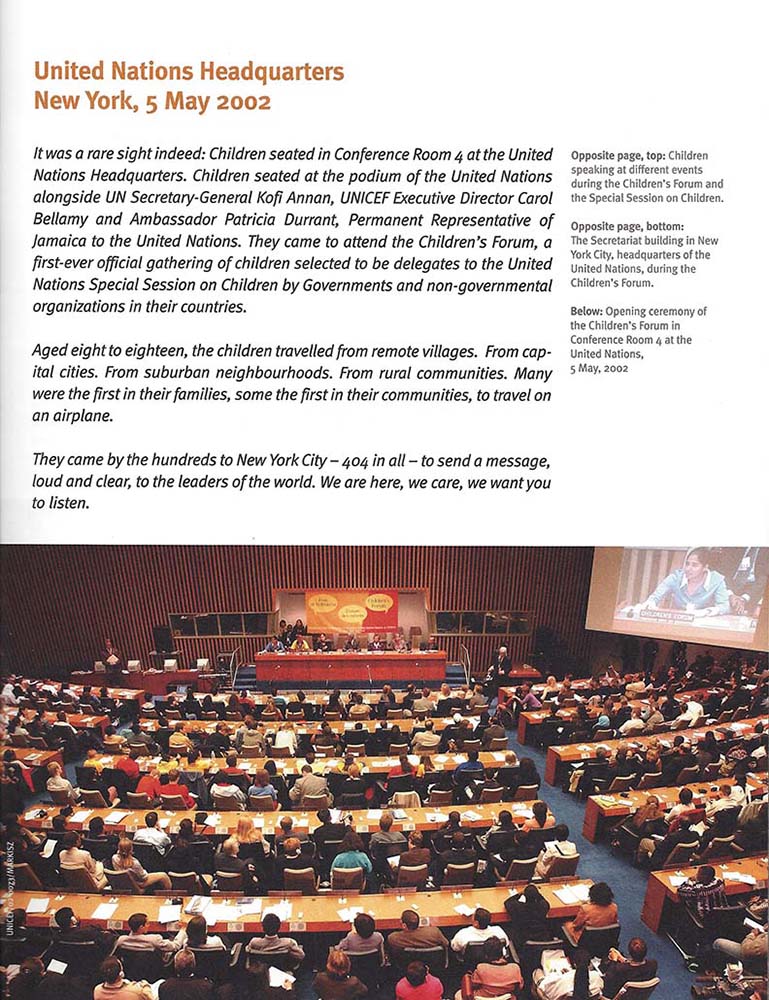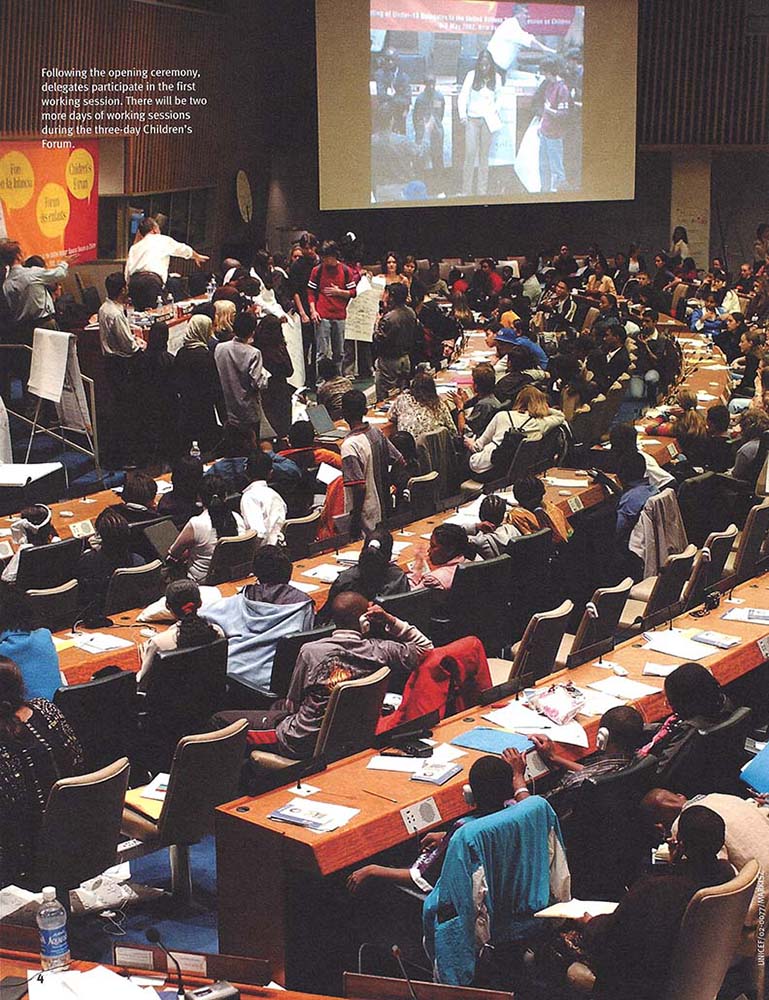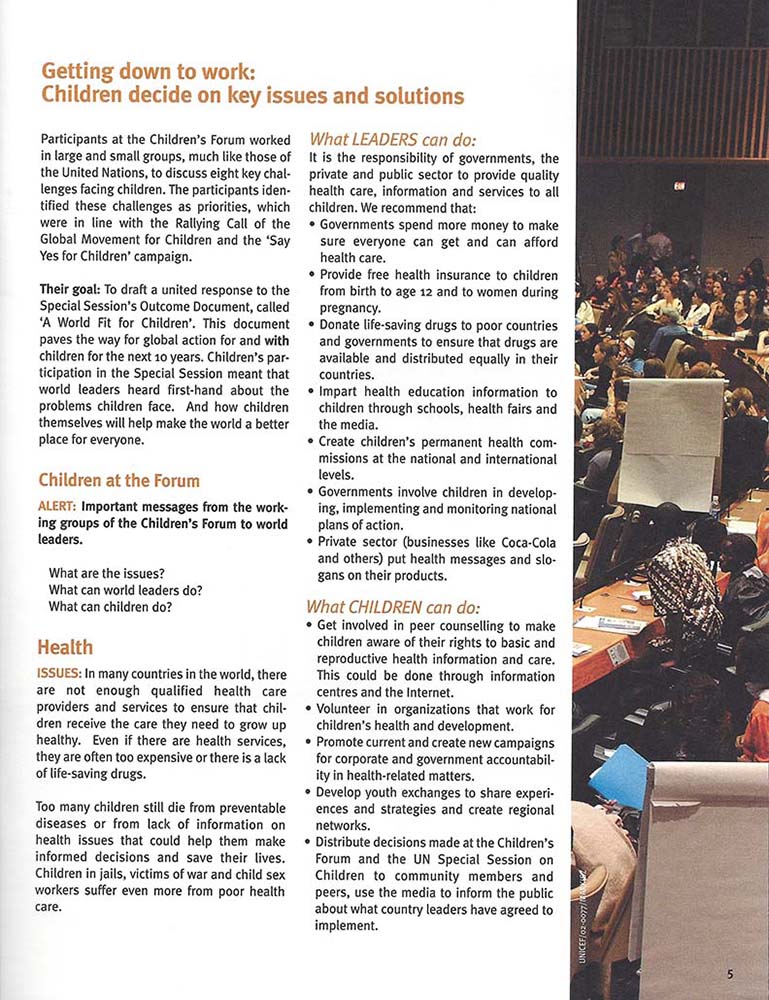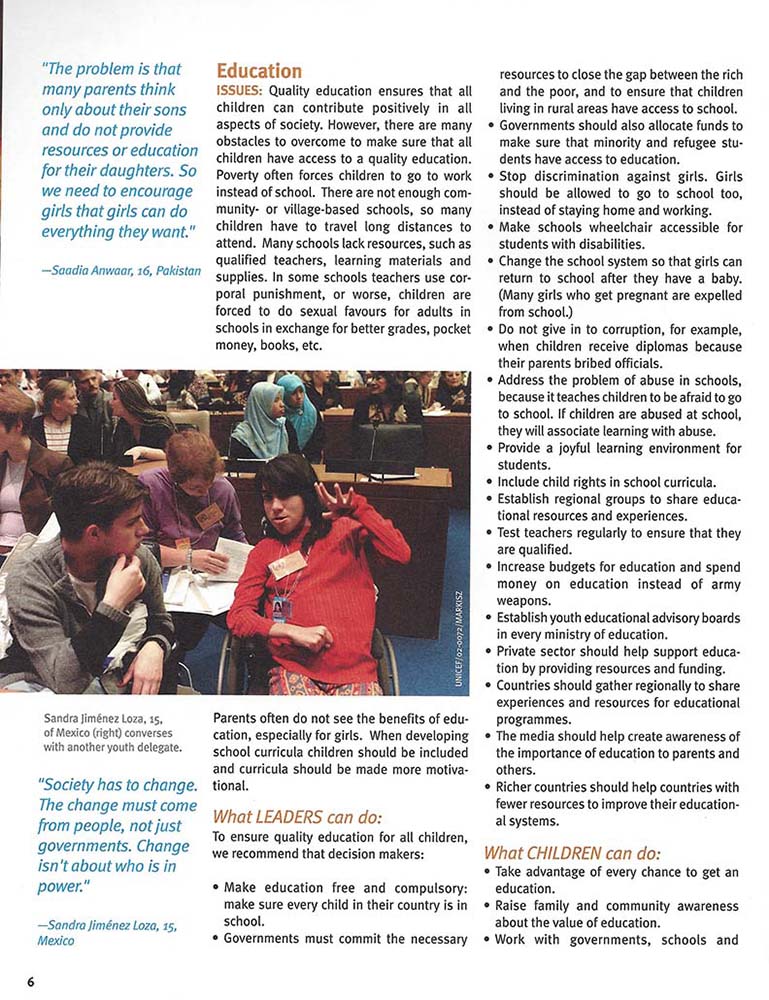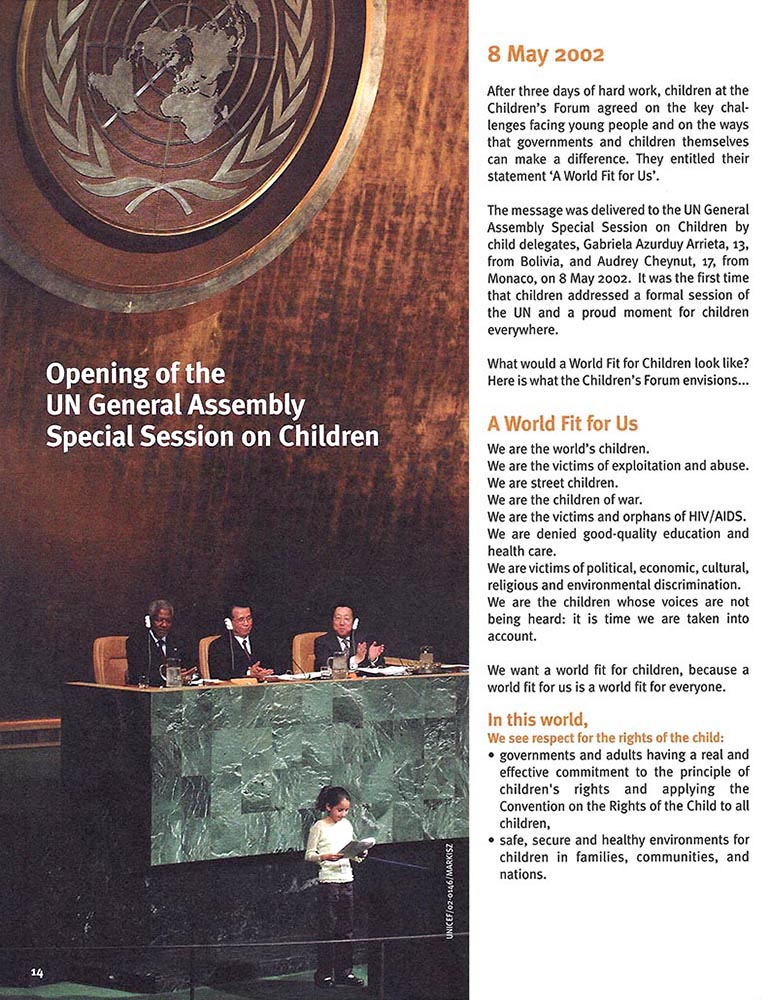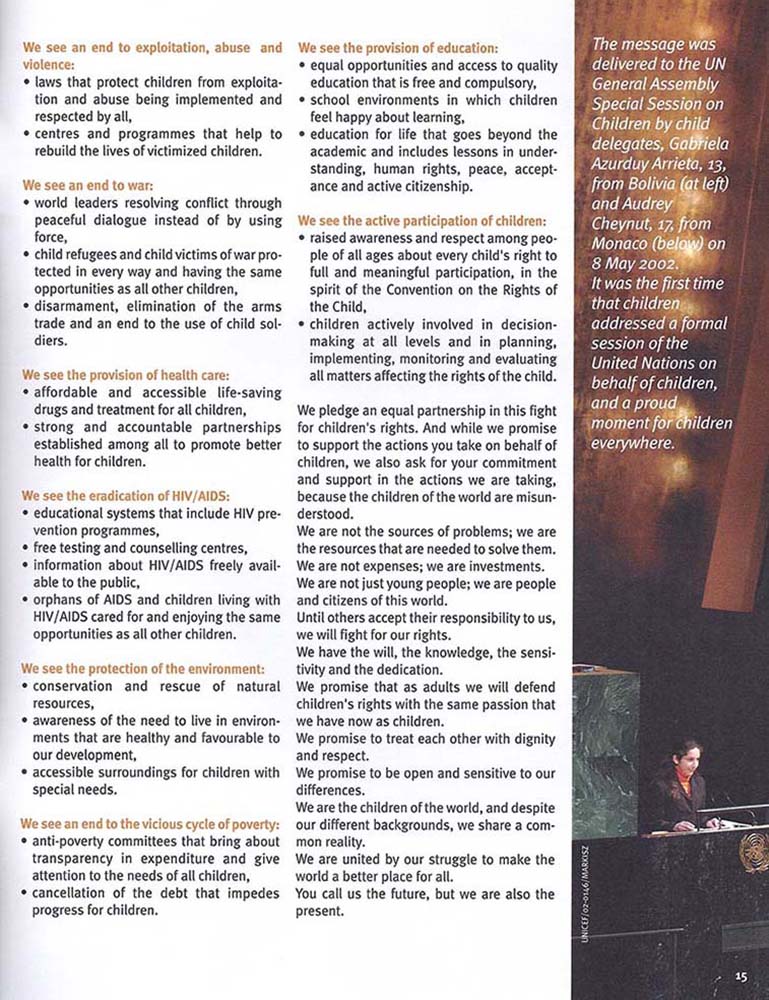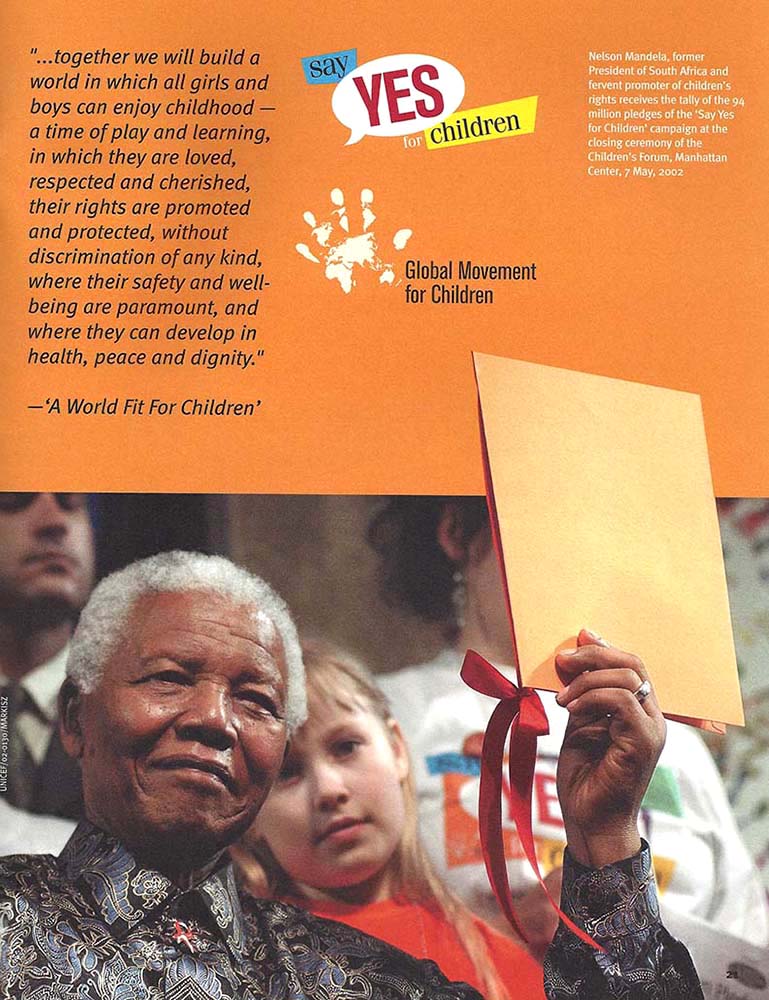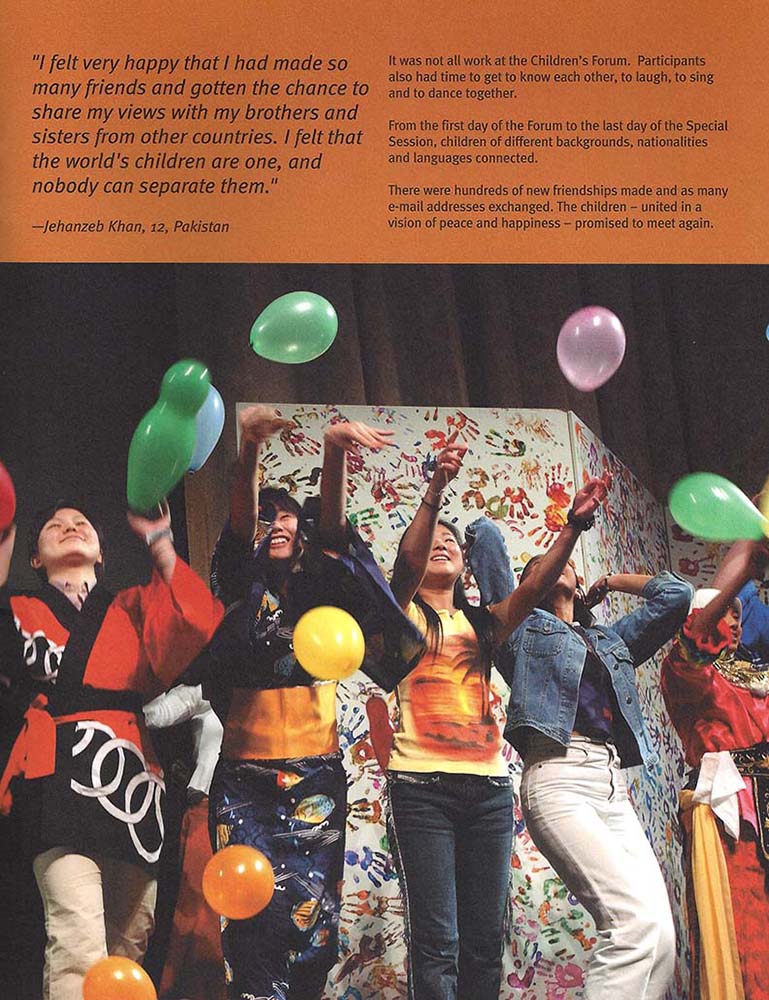LINKS TO PUBLISHED PHOTOGRAPHY AND WRITING FOR UNICEF
Refugees in Europe, Then and Now
Seven decades after World War II, refugees fleeing conflict, continue to seek safety beyond their homelands
UNICEF’s humanitarian work began in the aftermath of World War II — and by the mid 1950’s, millions of children were receiving aid. Seventy years later, refugee and migrants are entering Europe at levels not seen since World War II. Nearly 1 in 4 are children and the number of unaccompanied minors seeking asylum is growing.
Photo essay profiled on medium.com: photography and social change; and on BuzzFeed
Text by Susan Markisz
© UNICEF/UNI197652/Gilbertson VII
© UNICEF/UN04764/Gilbertson VII
In Greece circa 1949, children per out of a makeshift hut. In 2015 in the former Yugoslav Republic of Macedonia, a girl refugee, huddled under a blanket to ward off the cold, stands outside a tent. Many children are on the move, and all are in need of proper care and protection.
Read more on medium.com: Refugees in Europe: Then and Now
On the move across Europe, it is the hardest for children, many fleeing with very few comforts of home. Children are forfeiting their right to a childhood as they cross borders. All lose something when they leave home: friends, family and stability. Besides safe spaces, children need to learn and play.
Photo essay profiled on medium.com: photography for social change; and on Mashable
Text by Susan Markisz
© UNICEF/UNI199925/Georgiev
Read more on medium.com: Childhood Lost
Young Refugees Struggle to Hold onto Their Childhoods
Nearly one in four of the more than 1 million refugees and migrants who have arrived in Europe by sea this year is a child, according to the UN Refugee Agency. During the dangerous journeys that refugees and migrants make, children are the most vulnerable to sickness, injury, violence, exploitation, trafficking and death. In addition to the immediate physical threats that children forced to flee their homes face, they are also at risk of deep-rooted emotional scars.
© UNICEF/UNI199865/Georgiev
Read more on mashable.com: Refugee Children Struggle to Hold onto their Childhood
Every two seconds, a child takes his or her first breath in a conflict zone
Photo essay profiled on medium.com: photography and social change
Text by Susan Markisz
Read more: Born into Conflict
Refugees and migrants seeking safe passage in the former Yugoslav Republic of Macedonia and Serbia
Photo essay profiled on medium.com: photography and social change
Text by Susan Markisz
Visit Site: Facing an Uncertain Future
See photo essay: Facing an Uncertain Future
Photo and Text by Susan Markisz
Susan Markisz is a UNICEF Photographer and Assistant Photography Editor
In Bolivia last week, I met Gabriela, 13, who is being counselled in a therapeutic care centre (CEPAT) Centro Especializado de Prevención y Atención Terapéutica, in the city of Potosí. We have changed her name, as is our custom at UNICEF, because of the stigma associated with rape and sexual violence which is prevalent in many societies, not only in Bolivia. Gabriela was sexually molested several times beginning around age 11, and gave birth to a son, Juan, whose name we have also changed, 18 months ago, as a result of rape by a 50-year-old neighbor.
All stories of child violence are tragic, but this case was particularly heart-wrenching because I was there in person to bear witness to her story. Gabriela’s biological mother abandoned her at the age of 3, and went to Argentina and began a new life without her daughter – therapists speculate her mother may also have been a victim of rape. Left in the care of her grandmother, Gabriela never attended school and was frequently left alone at home, vulnerable to strangers without what we consider normal child protections – a loving family, education, school-age friends, and the understanding that certain actions cross boundaries – fundamental life strategies which were never imparted to her.
Read more: Bolivia's Vulnerable Children
Living with Dignity - Mozambique
Text by Susan Markisz
In this week’s Photo of the Week, Paulino, 7, and his sister Laura, 14, stand beside their possessions, displayed outside their hut in Zambezia Province, Mozambique. The children have been on their own since the deaths of their parents and siblings several years before this photo was taken, in 2007.
Every time I’ve come across this photograph in our library, it has always made me stop and look just a little harder into the frame. I think about the half dozen cups, a bowl, the mismatched and chipped plates, two water containers, an umbrella, a pillow, a hoe, a few utensils and a notebook, held by Paulino, and then about the things in my own life that I have in abundance, as well as the different trajectory that my life has taken. I have more than I need to sustain me, a husband, two children and a loving extended family and material possessions far beyond what is truly necessary. My husband and I survived devastating diseases when our children were small and we benefited from a healthcare system that enabled us to receive lifesaving treatment. My home is filled with material things I’ve collected over the years, some acquired during a vacation, and others purchased on a whim, just because I could.
When I look at this photograph, I see dignity in the careful placement of the few precious items on their sleeping mats. But I keep going back to the idea that it is not what Paulino and Laura lack in material possessions, but rather, the unseen losses of family members which are revealed so dramatically in their faces.
Visit site: Living with Dignity
Susan Markisz is a UNICEF Photographer and Assistant Photography Editor
A photo essay edited and written by UNICEF Photographer and Assistant Photography Editor Susan Markisz to illustrate UNICEF’s 2012 Humanitarian Action Report, appealing for US $1.28 billion to meet the needs of millions of vulnerable children in more than 25 emergency-affected countries.
Read more: Children in Complex Crises
A photo essay edited and written by UNICEF Photographer and Assistant Photography Editor Susan Markisz to illustrate UNICEF’s 2011 Humanitarian Action for Children Report appealing for US $1.4 billion to meet the needs of children and women affected by emergencies in 32 countries to address vulnerabilities before tragedy strikes, to help communities mitigate the effects of disaster and recover more rapidly.
Read more: Building Resilience to Protect Children
Photographs by Susan Markisz
A selection of photographs from 2012 in Guatemala, focusing on young children and the simple and proven interventions that can save lives. Though more children than ever worldwide live to celebrate their fifth birthday, approximately 18,000 children still die each day, mostly from preventable causes. Worldwide, approximately four out of five children receive routine immunizations. But until every child - including the final "fifth child" - is reached, vaccine preventable diseases threaten every child's right to survive. Launched in 2012, ‘A Promise Renewed’ – a global movement to accelerate progress in reducing child mortality – aims to end preventable child deaths within a generation.
Read more: Early Childhood Survival
A photo essay on children affected by violence, an often invisible problem, occurring behind closed doors or shrouded in silence born of social tolerance, stigma or taboo, at all levels of society.
Read more: Making the Invisible Visible
Critical Issues Facing Women in Latin America
Photo by Susan Markisz
Visit site: Critical Issues Facing Women in Latin America
In Guatemala, Sustained Routine Immunization of Children
Photos by Susan Markisz
Visit Pinterest site: In Guatemala: Sustained Routine Immunization for Children
Text by Susan Markisz
Susan Markisz is a UNICEF Photographer and Assistant Photography Editor
A girl, who cannot be more than 5-years-old, struggles to balance a jug of water on her head at a water point in Al-Riyad Camp in West Darfur State, Sudan. This photograph, taken by Georgina Cranston in 2006, was selected as our Photo of the Week to highlight World Water Day, later this week. Held annually on 22 March, the day focuses on the importance of freshwater and the inequity of access to safe water in impoverished rural areas and slums.
I feel that the child’s intensity and determination to complete her task in bringing water to her displaced family is both endearing and alarming. At five, she ought to be curling her fingers around crayons, attending school or playing with friends, not hoisting a jug of water whose weight and responsibility is far too onerous for one so young.
Visit site: Save Water, Save Energy
Susan Markisz is a UNICEF Photographer and Assistant Photography Editor
In this photo, 11-year-old Nour (right), who has Down Syndrome, plays a game with Ebru, a youth worker from the Turkish Red Crescent, at the shelter where Nour and her family live in the Islahiye camp for Syrian refugees.
Nour and her family fled their home in the Syrian Arab Republic more than three years ago, soon after violence erupted there. She used to attend a special school for children with Down Syndrome in her country, where she learned to read and write, but she can no longer attend school because the learning facility in the camp cannot accommodate children with special needs. Still, such obstacles do not keep her from thinking of the future. “I’m both hard-working and smart,” says Nour, who dreams of becoming a doctor one day.
Almost 25 years ago, with the creation of the Convention on the Rights of the Child (CRC), the world made a promise to children to protect and promote their rights to survive and thrive, to learn and grow, to have their voices heard and to reach their full potential. The CRC makes clear the idea that a basic quality of life should be the right of all children rather than a privilege enjoyed by only a few.
Visit site: Struggling to Attend School
South Sudan Malnutrition Crisis Text by Susan Markisz
In this photo of the week, an older boy tenderly feeds a younger child in a UNICEF-supported civilian protection site in South Sudan, a country where 4 million people are in need of urgent food assistance due to a devastating, and rapidly escalating humanitarian crisis of violence and conflict.
These two children are among an estimated 50,000 children under the age of 5 that are likely to die this year from severe acute malnutrition if greater access to humanitarian assistance is not provided. In the world’s newest country, this requires awareness of the extreme vulnerability of children whose basic needs are not being met.
As we approach the 25th anniversary of the Convention of the Rights of the Child, there is much to celebrate but humanitarian crises and emergencies continue to hamper the fulfilment of even the most basic of human rights.
Visit site: South Sudan Malnutrition Crisis
Susan Markisz is a UNICEF Photographer and Assistant Photography Editor
Text by Susan Markisz
Susan Markisz is a UNICEF Photographer and Assistant Photography Editor
When this photograph of schoolgirls at Waziri Mazadu Primary School in the town of Dass, Nigeria, was taken in 2007, school enrollment and completion rates in basic education were low due to economic disparities and social inequities. In 2012, the last date for which complete data is available, only 72 per cent of primary-school-aged boys and 68 per cent of girls were attending school in Nigeria. And once children reached secondary school age, those numbers fell to 54 per cent for both boys and girls.
Education is free and compulsory in Nigeria. So what accounts for this glaring inequity in school attendance – and the resistance to education in general?
Underlying causes include local beliefs, poverty and early marriage, especially for girls; but clearly the importance of education needs to be seeded at birth. With an adult literacy rate of 51 per cent, it is small wonder that priorities need to change. And yet, with the recent abduction of 300 girls from Chibok Secondary School, who wants to send their daughter to school, only for her to be at risk of kidnapping, forced marriage or sexual violence?
Malala Yousafzai, the courageous girls’ education activist from Pakistan, is no stranger to extremism. She, along with friends in 2012, was shot by the Taliban for advocating for girls’ education. While she continues to recuperate from life-threatening injuries in the United Kingdom, she has found her voice on behalf of those girls whose ethnicities, religions, parents and societies undermine girls’ right to a say in their futures.
Malala has joined hundreds of thousands of other girls and women globally who have collectively raised their voices – again – this time not only to reinforce the idea that education is for girls and boys alike, but more importantly, to #BringBackOurGirls, to their families and their schools, where they will hopefully recover and not lose faith in a system that is perhaps their only hope for the future.
Visit Site: Educating Girls in Nigeria
Susan Markisz is a UNICEF Photographer and Assistant Photography Editor
UNICEF Staff members among TIME Magazine's Most Influential People in 2013
Photograph by Susan Markisz
Humanosphere
UNICEF Gets a Little Bit Cooler and More Innovative
Photograph by Susan Markisz
Read More: UNICEF Gets a Little Bit Cooler
#IMAGINE
In support of children’s rights, artist Yoko Ono has endorsed #IMAGINE, UNICEF’s new interactive digital project that will allow everyday people to use an application to record their own version of ‘Imagine’, John Lennon’s iconic anthem of hope and peace. Yoko Ono shows her support for child rights during the #IMAGINE launch held at United Nations Headquarters as part of 25th anniversary celebrations of the Convention On the Rights of the Child, on 20 November 2014.
#IMAGINE
Photos by Susan Markisz
STATE OF THE WORLD'S CHILDREN IN LATIN AMERICA AND THE CARIBBEAN 2008
Committing to Child Survival
Photos by Susan Markisz
Watchlist: No One to Trust: Children and Armed Conflict in Colombia
Photo by Susan Markisz
World Day of Prayer and Action for Children Website (a UNICEF partner)
Photo by Susan Markisz
UNICEF Ambassadors Newsletter Photos by Susan Markisz
WHO: Forging a Consensus on Ending Preventable Maternal Mortality
Photo by Susan Markisz
Visit site: Ending Preventable Maternal Mortality
State of the World's Children 2011: Age of Adolescence
Read More: State of the World's Children 2011: State of the World's Children 2011
State of the World's Children 2011: Age of Adolescence
Read publication: State of the World's Children 2011: State of the World's Children 2011
UNICEF: Levels and Trends in Child Mortality in 2013

